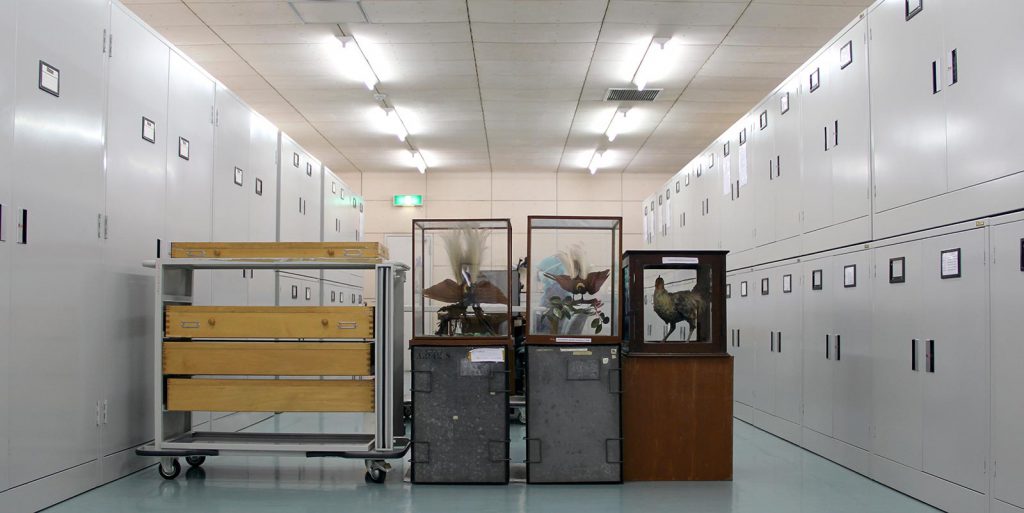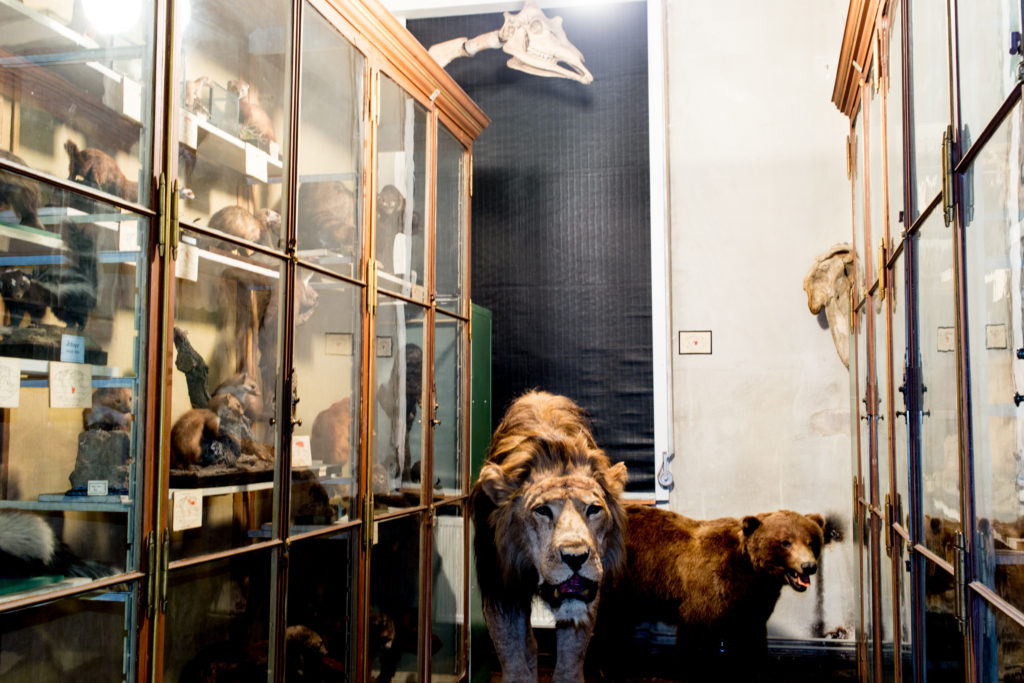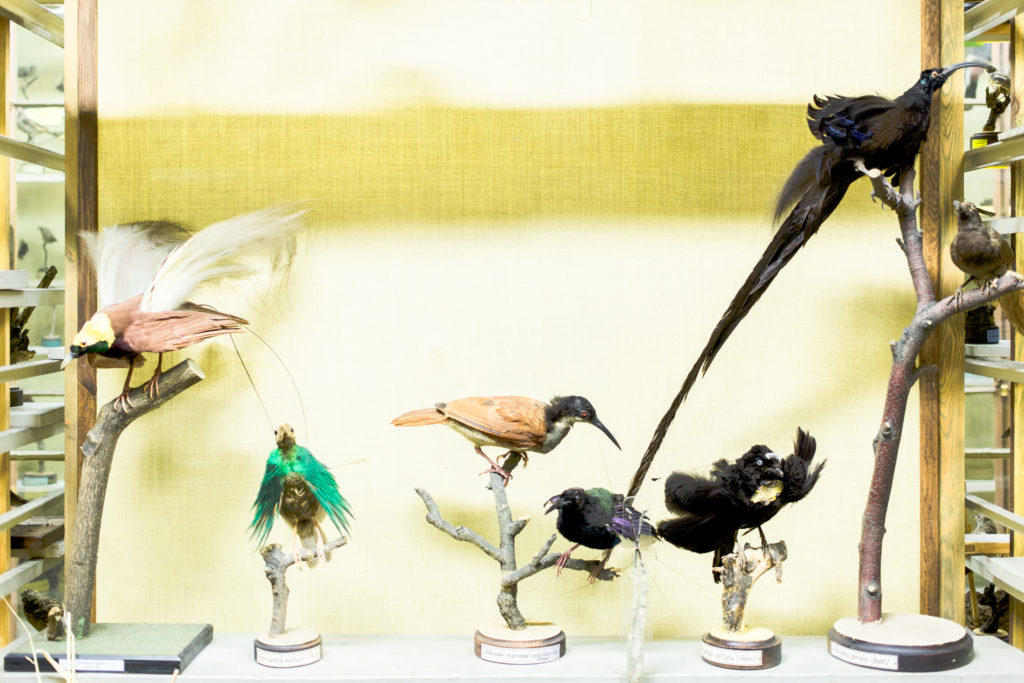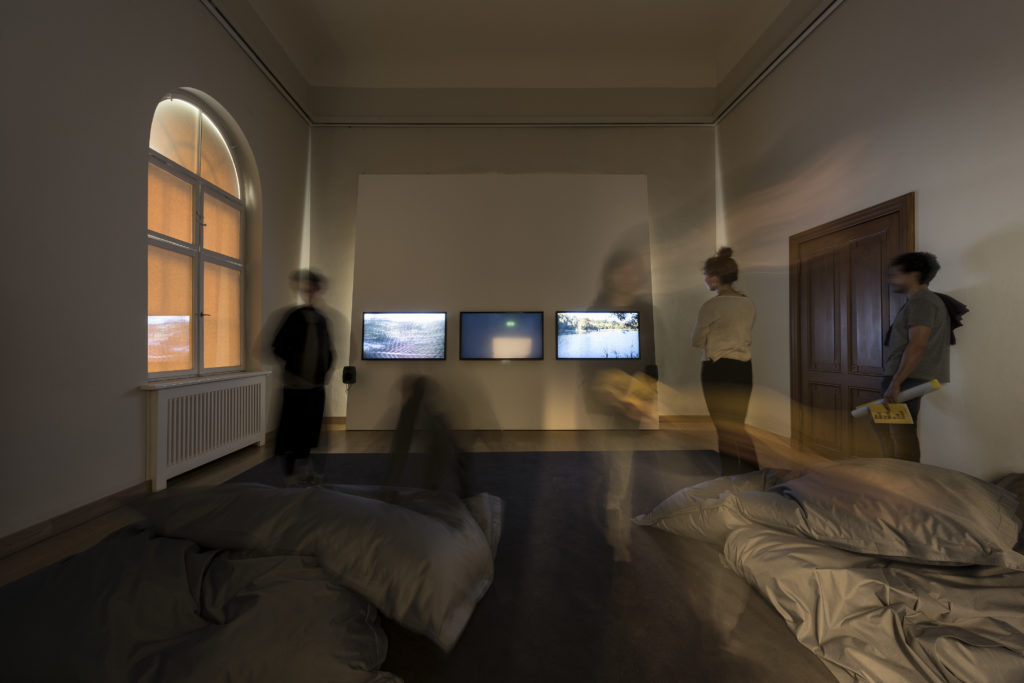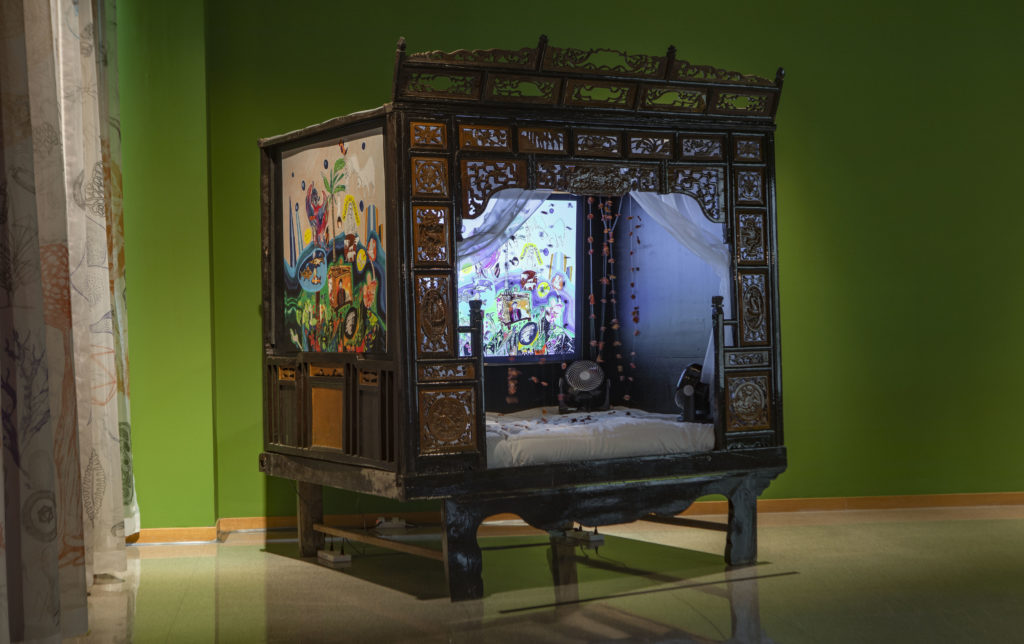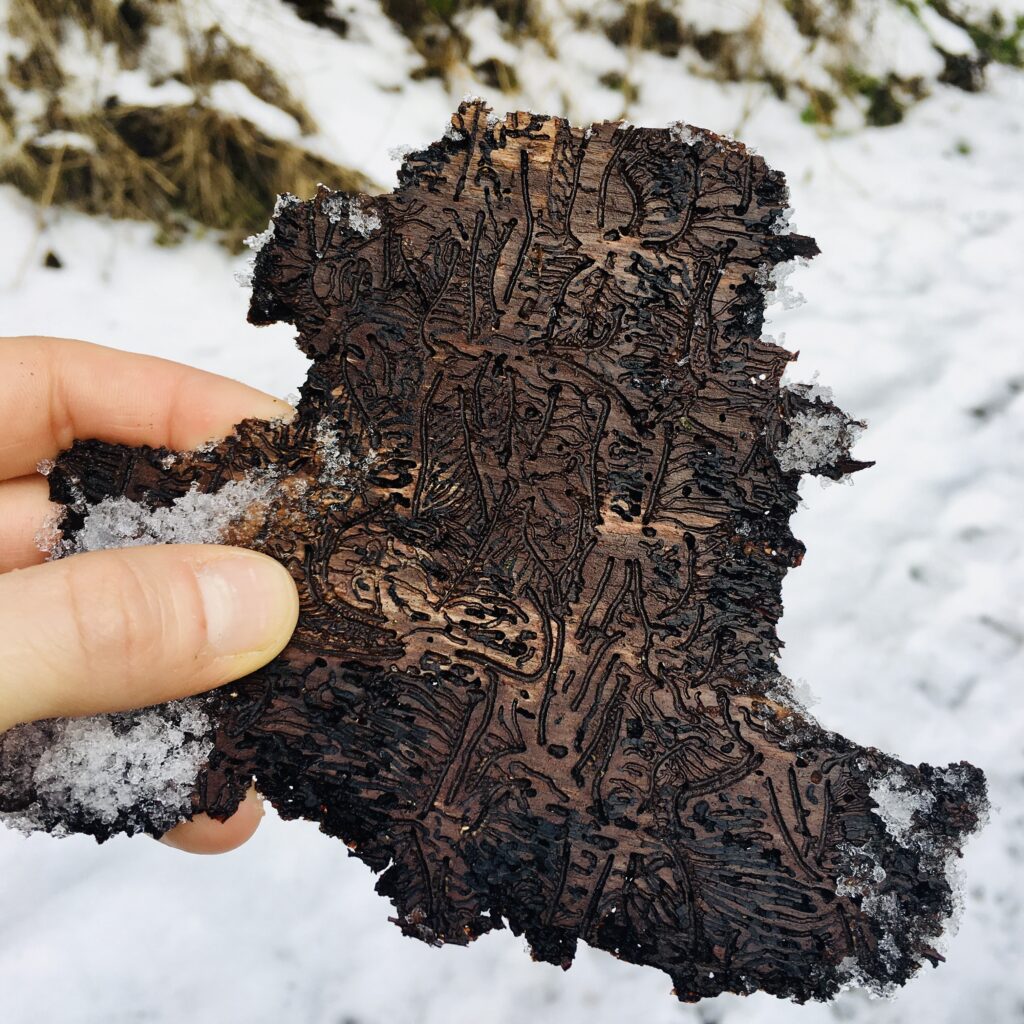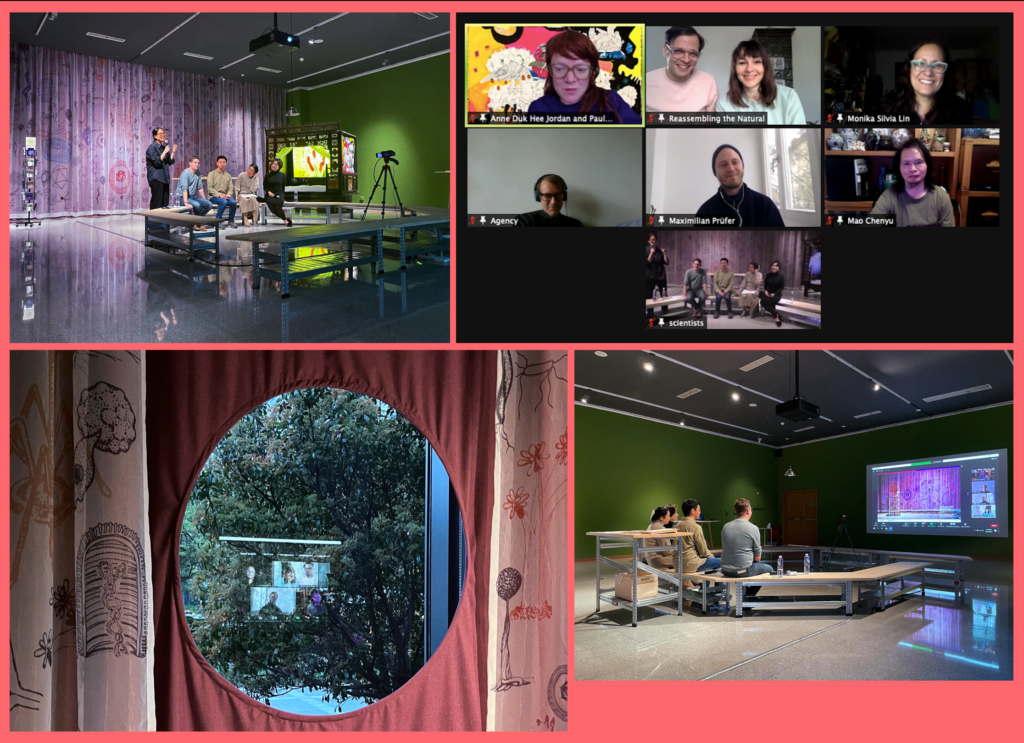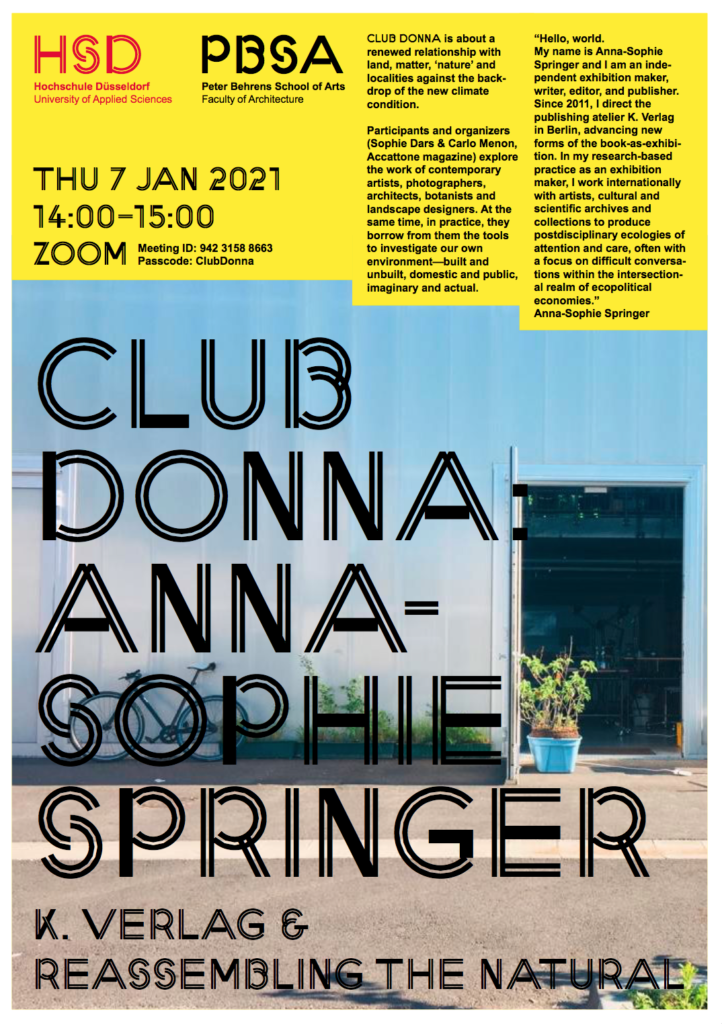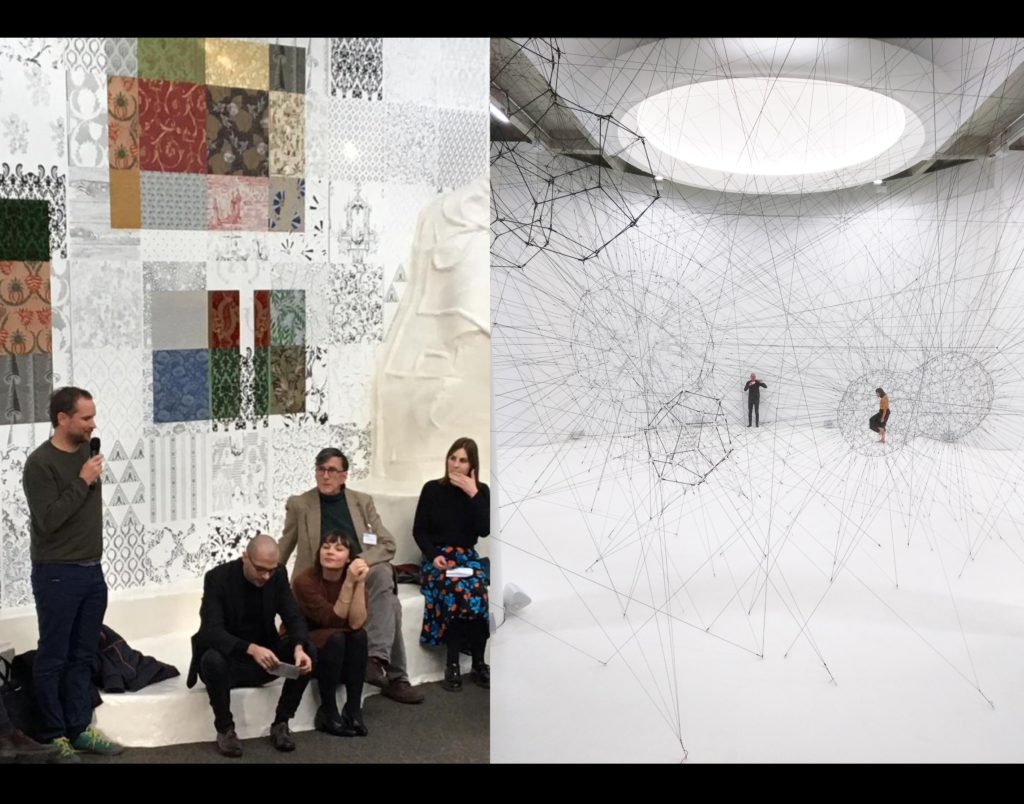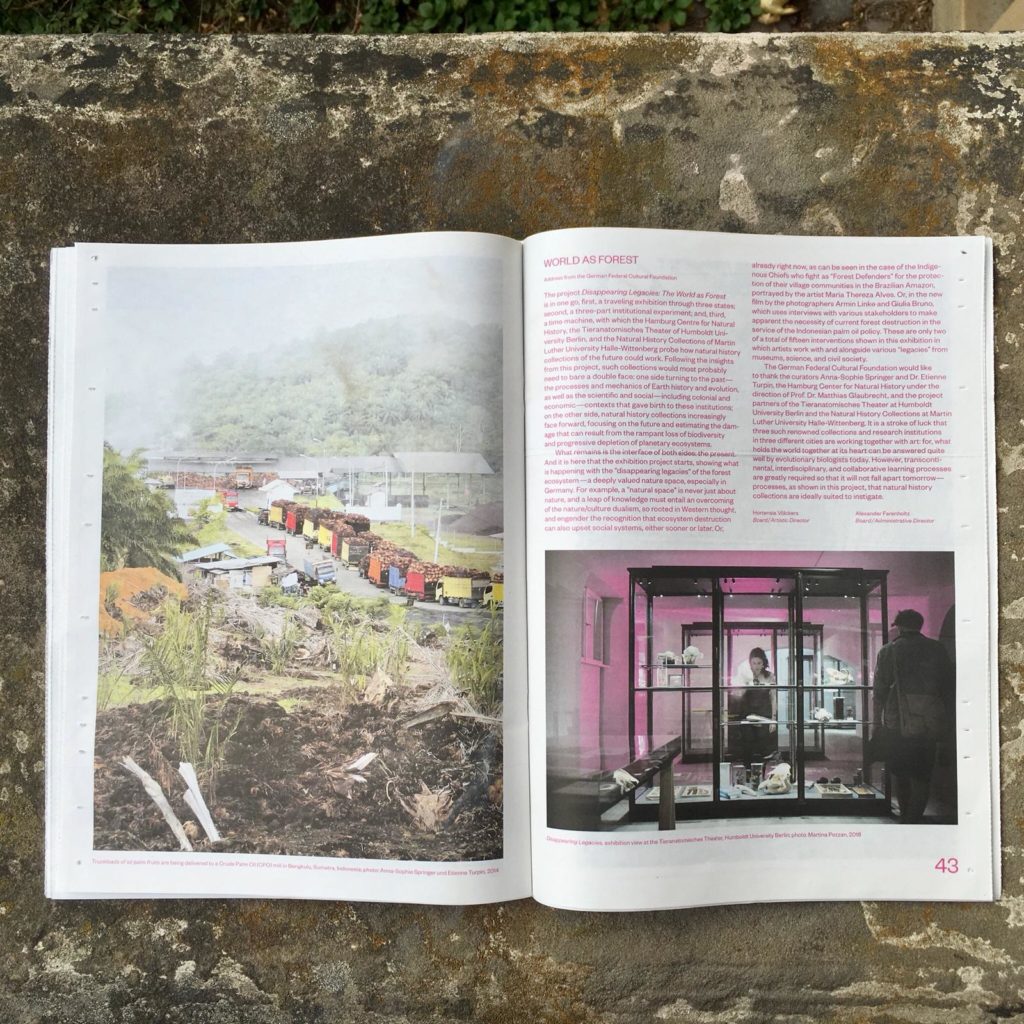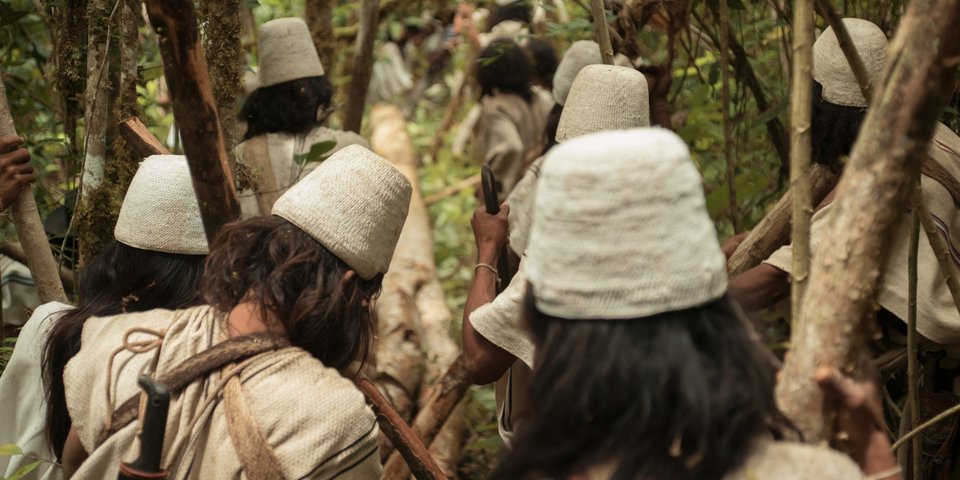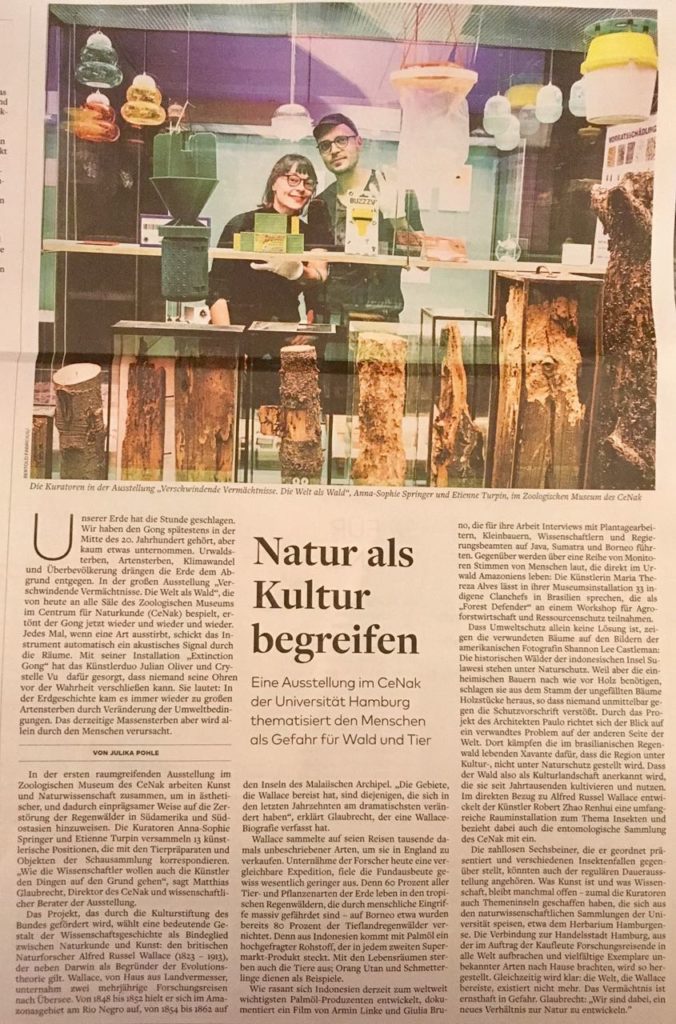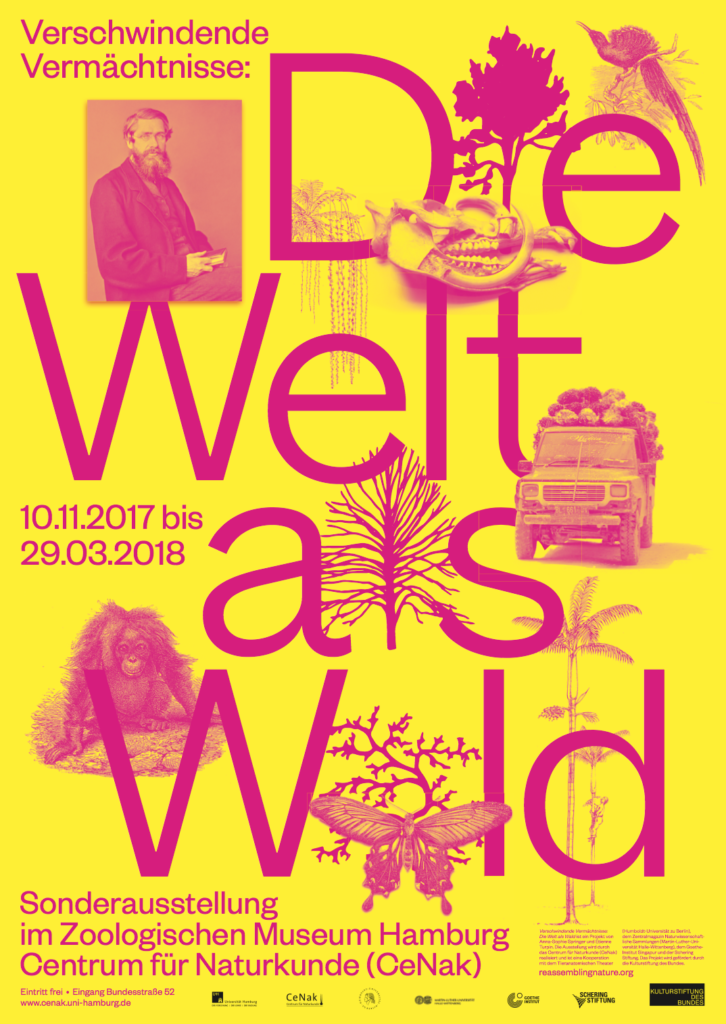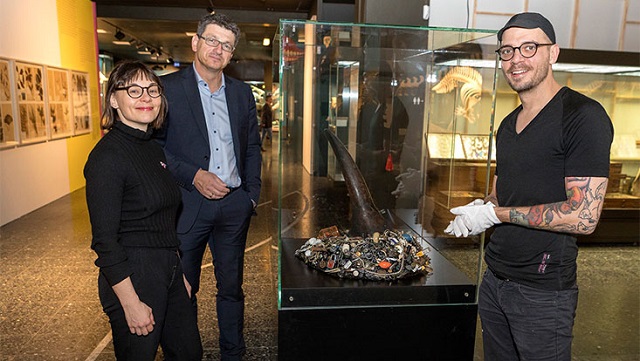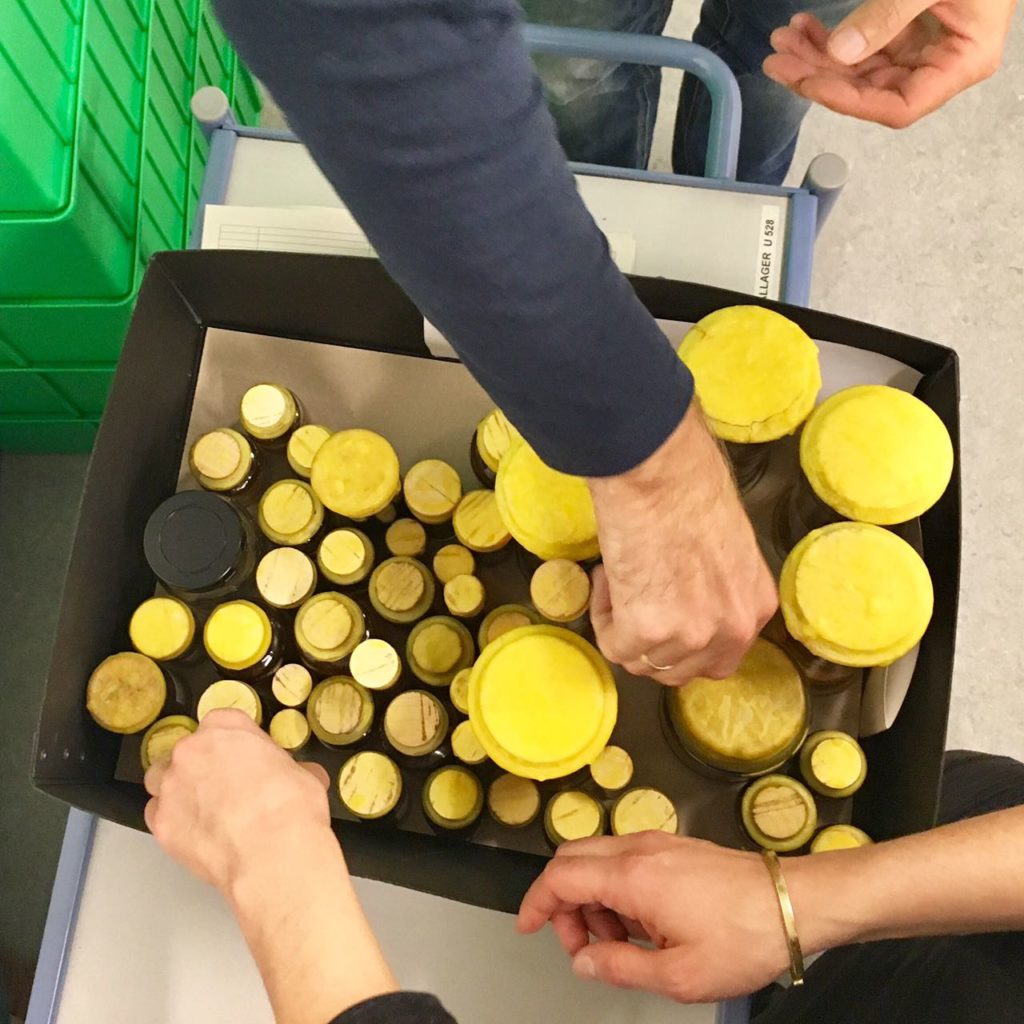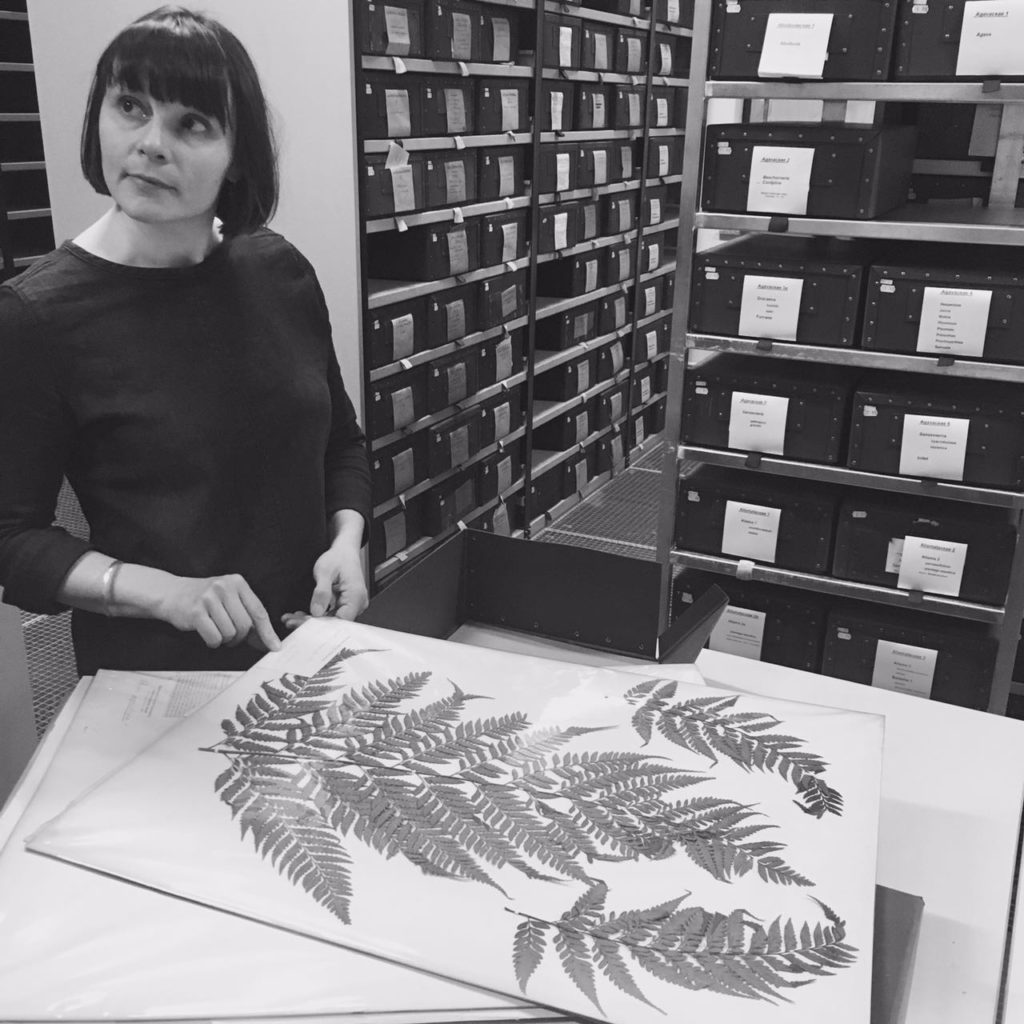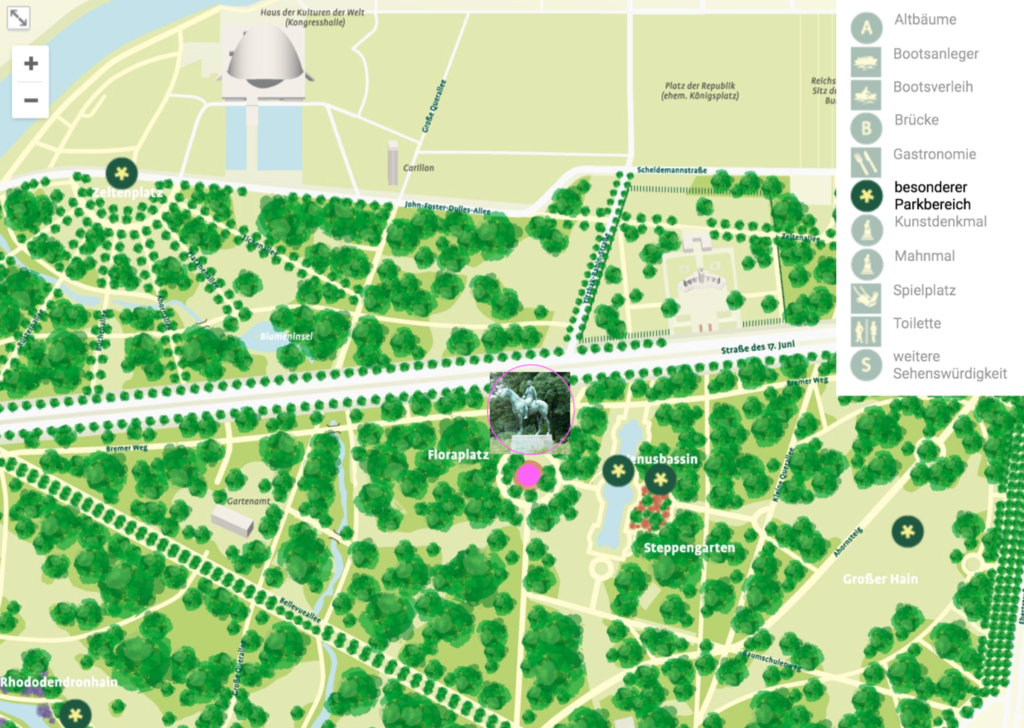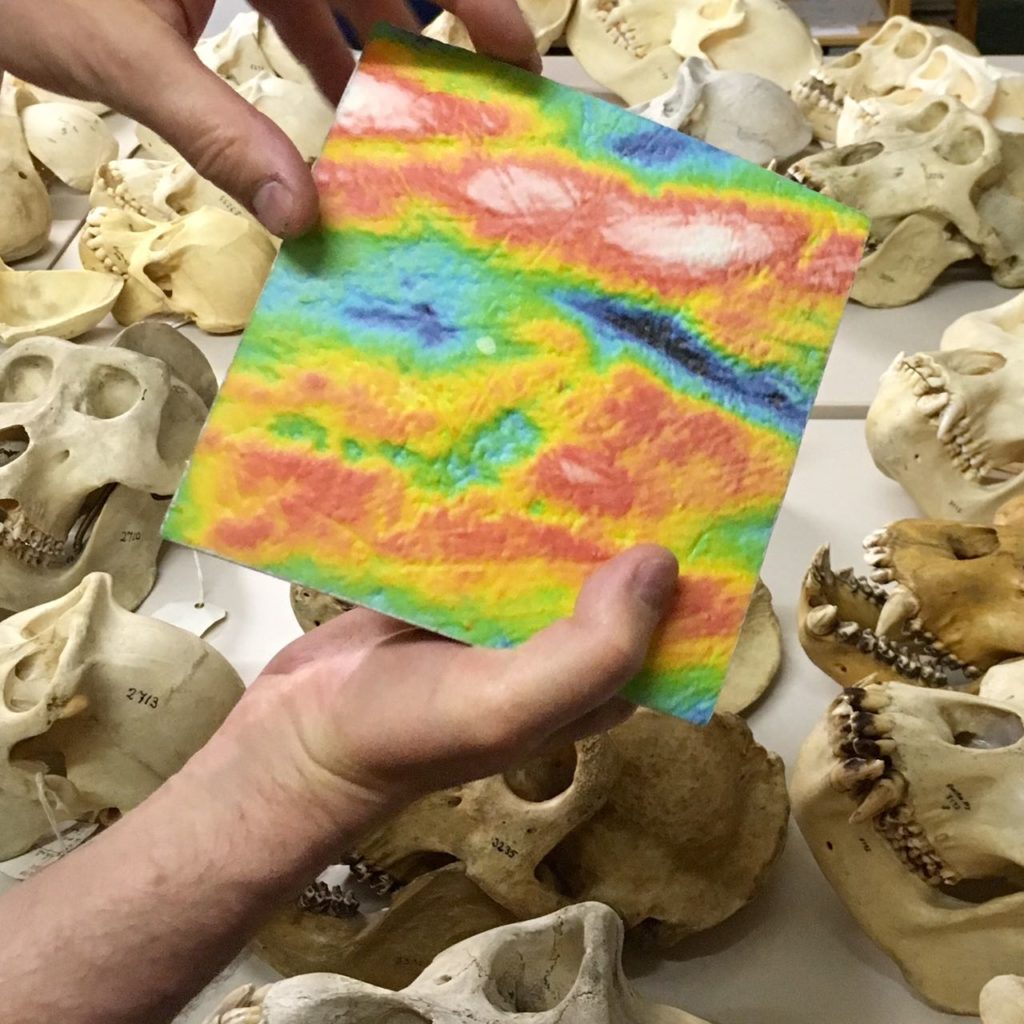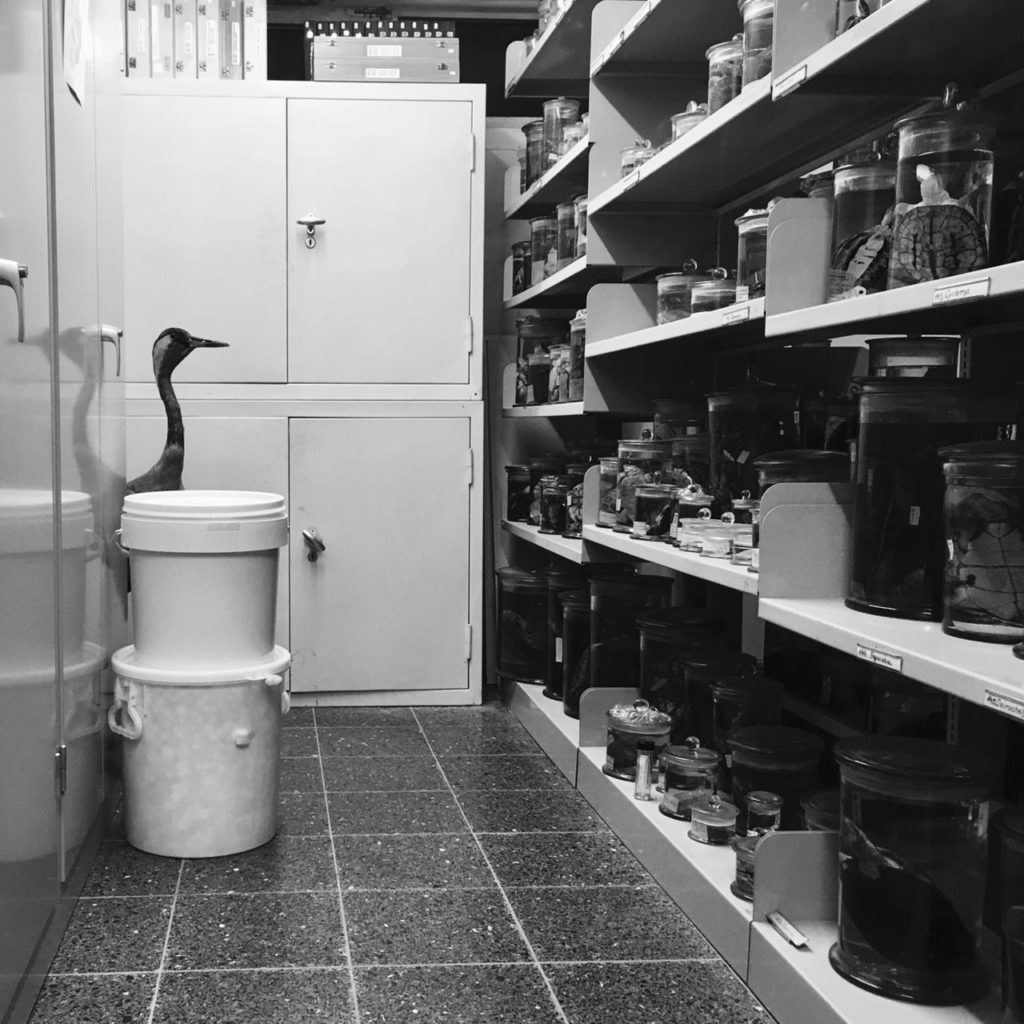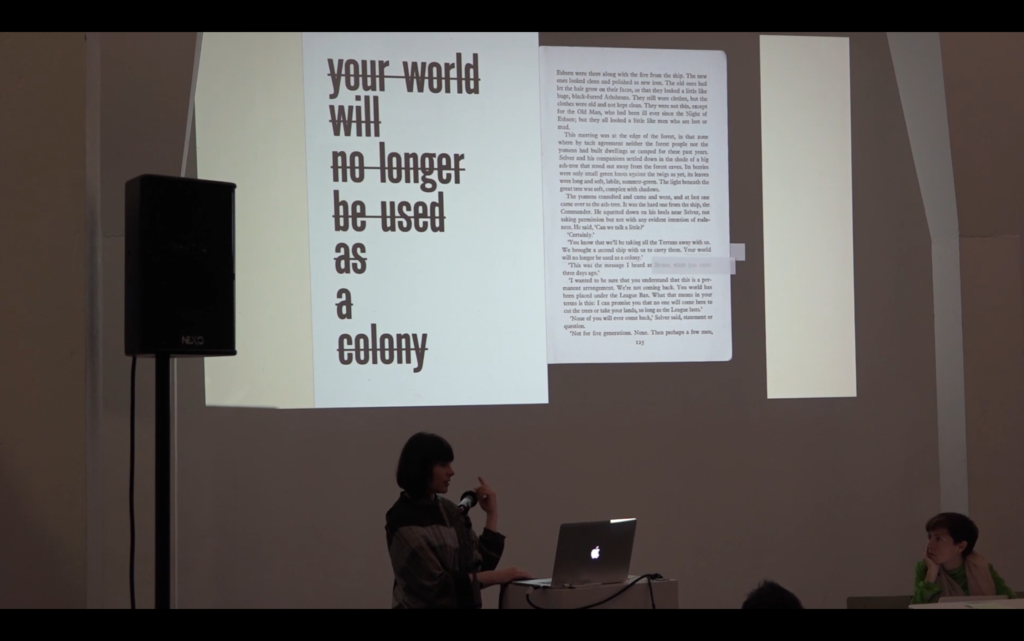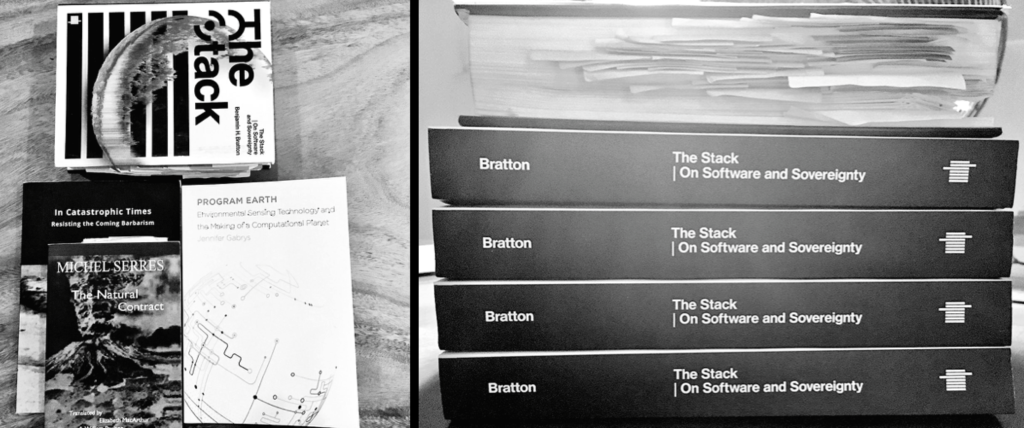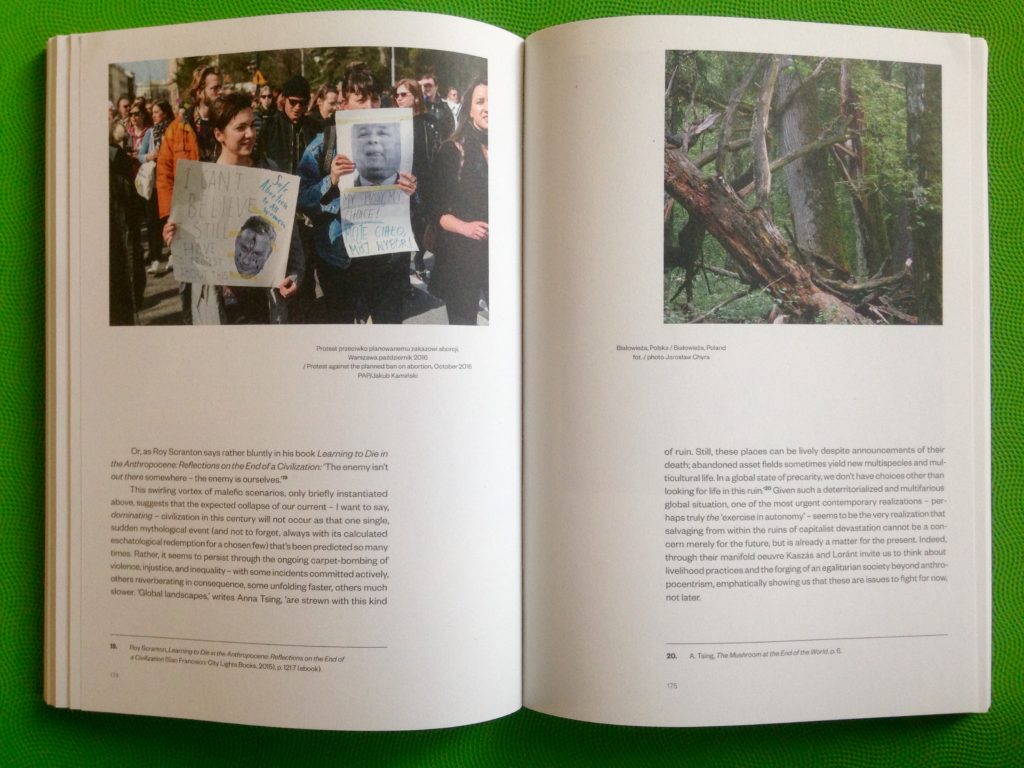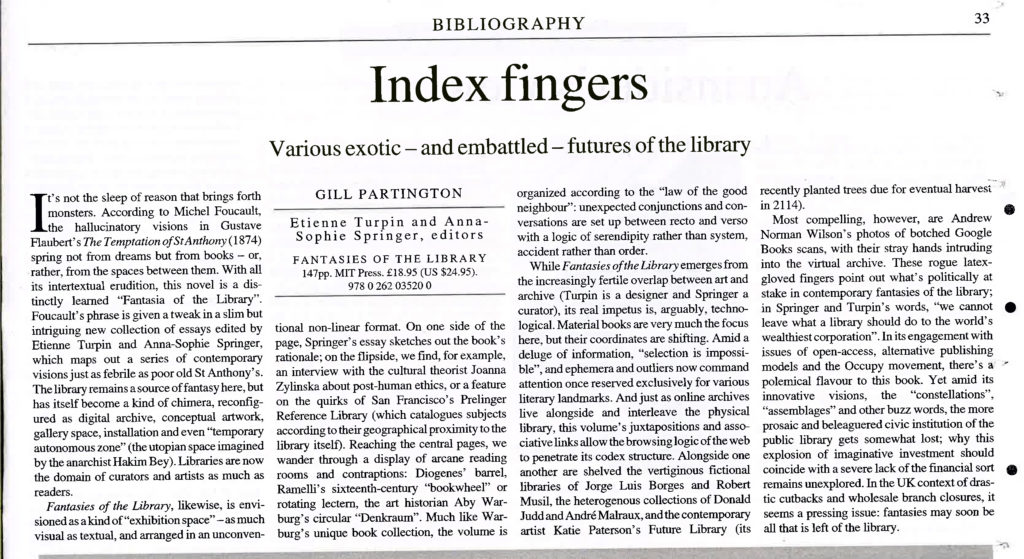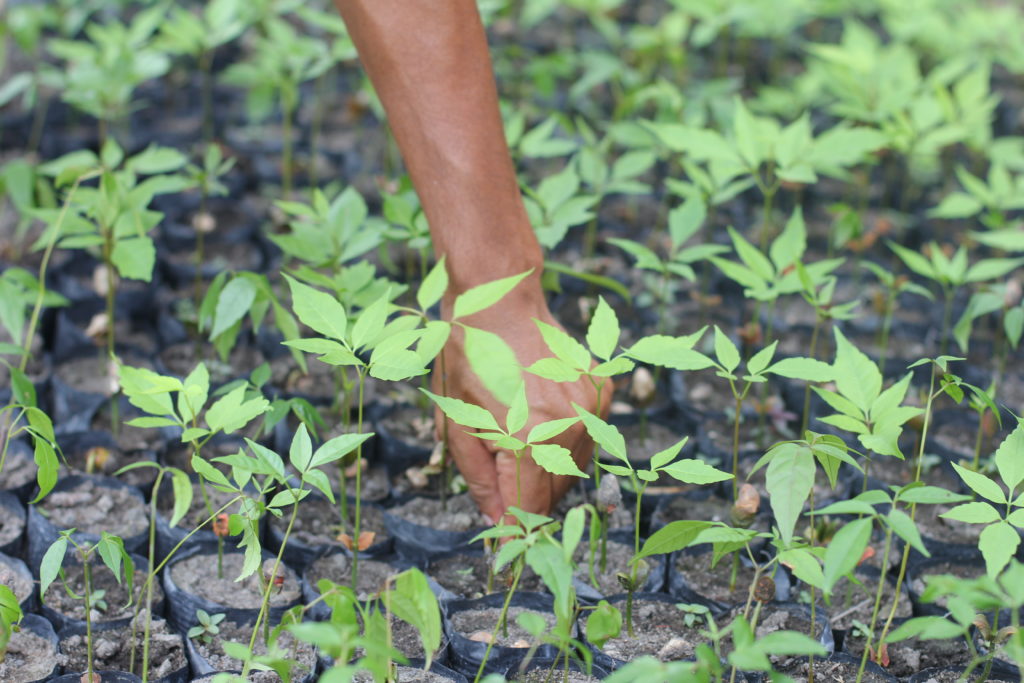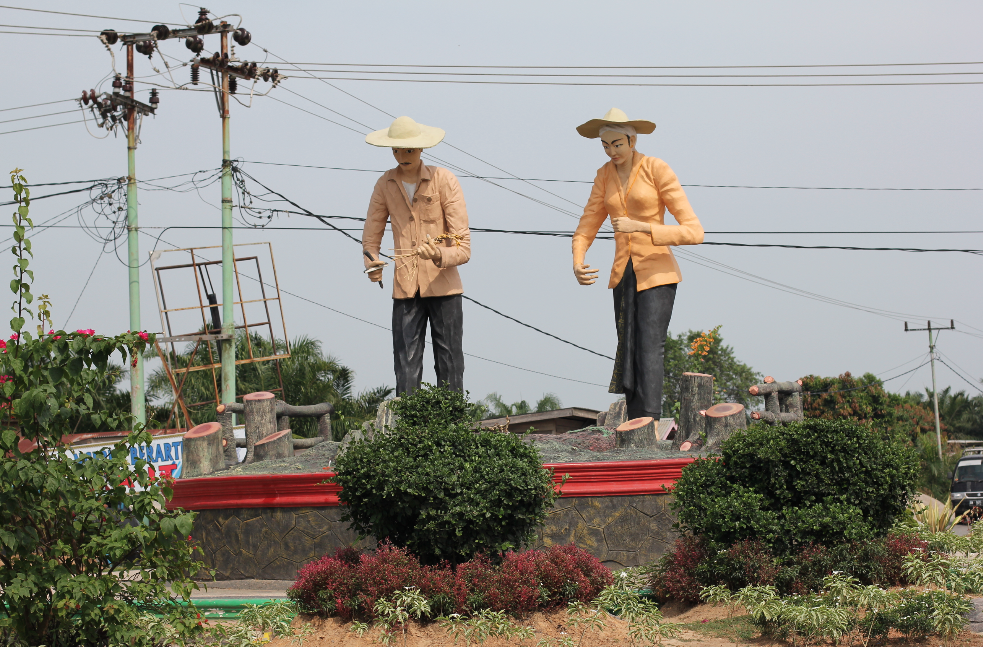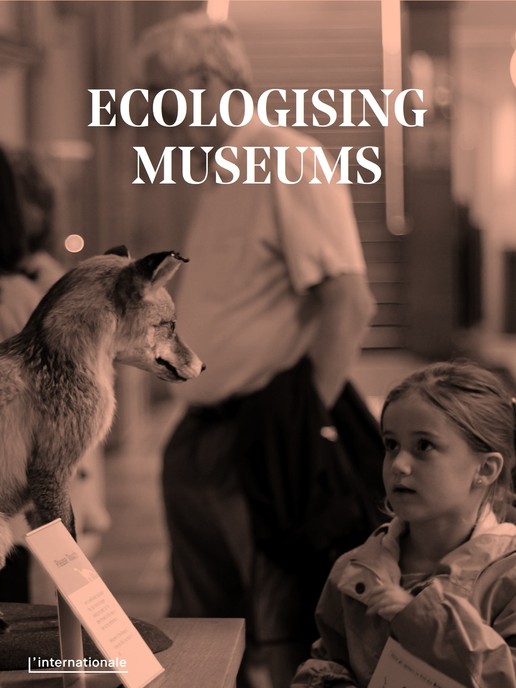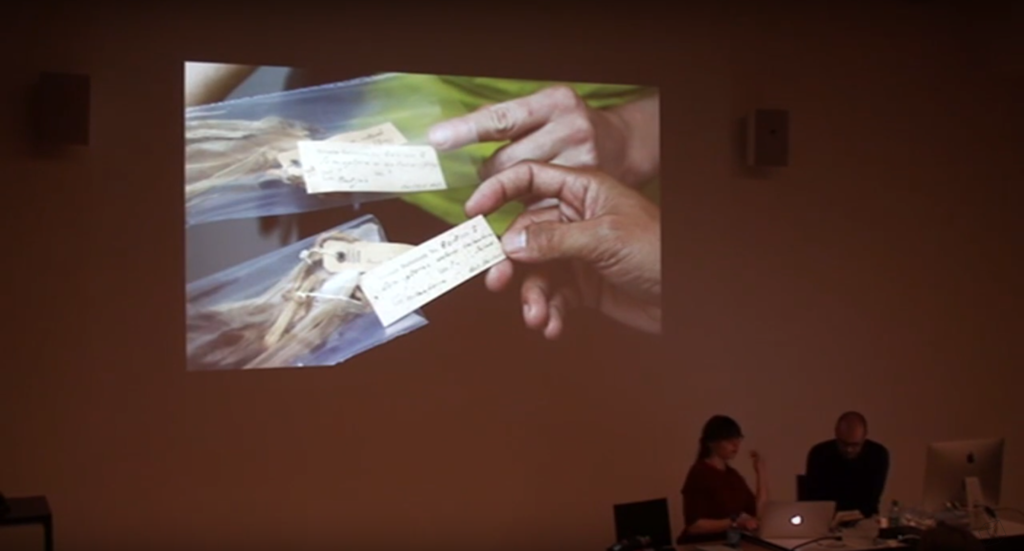1 October 2025
VEIL OF NATURE — Rethinking the Conservation of the Living
— a symposium conceived by Justine Blau at the Luxemburg Museum of Natural History

On the occasion of the release of Justine Blau’s recent publication Veil of Nature—Processing Process (K. Verlag, 2024), the artist has conceived a transdisciplinary symposium in collaboration with the Muséum d’Histoire naturelle de Luxembourg. As the book explores the possible resurrection of an extinct plant from Charles Darwin’s herbarium, this one-day event convenes a diverse group of national and international speakers to reflect on conservation in times of crisis. Together, they will engage with questions of ecological breakdown, approaches to preservation, and the myriad ways in which the natural world matters and is perceived.
As co-editors of Veil of Nature, Anna-Sophie Springer and Etienne Turpin are pleased to contribute to this symposium with a presentation titled “Curating and/or Symbiogenesis.” This contribution builds on our long-term work not only as as editors and thinkers, but as Co-Principal Investigators of the exhibition-led inquiry Reassembling the Natural (RN). We look forward to revisiting and sharing a research trajectory that critically engages with the colonial, material, and epistemic infrastructures of natural history—its museums, its collections, its classificatory regimes, and racializing ways of seeing. If natural history museums once served to naturalize extractivism and ecocidal worldviews—dismembering multispecies worlds, converting kin into data, and transforming Indigenous territories into “natural” resources—RN asks how such institutions might now be reimagined. Our approach explores how the dismantling of dominant museological frameworks can open towards practices of ecological reparation and more-than-human care and affiliation. In this shared space of inquiry, curatorial work becomes an act of symbiogenesis: not simply a mode of displaying an image of nature, but a process of co-emergence and transformative relation.
Veil of Nature — a symposium with contributions from:
Justine Blau, Guy Colling, Catherine Gautier, Pierre-Henri Gouyon, Thierry Helminger, Axel Hochkirch, Patrick Michaely, and Reassembling the Natural (Anna-Sophie Springer & Etienne Turpin)
We look forward to this exciting exchange!
Practical information:
LUGA Lab, Parc Odendahl, Pfaffenthal, Luxembourg
Parking: Glacis Parking, Panoramic Elevator Pfaffenthal
Train: Stop Pfaffenthal-Kirchberg
Bus: Lines 23 and 26, Stop Pfaffenthal-Vauban
These Birds of Temptation
— intercalations 6 is out
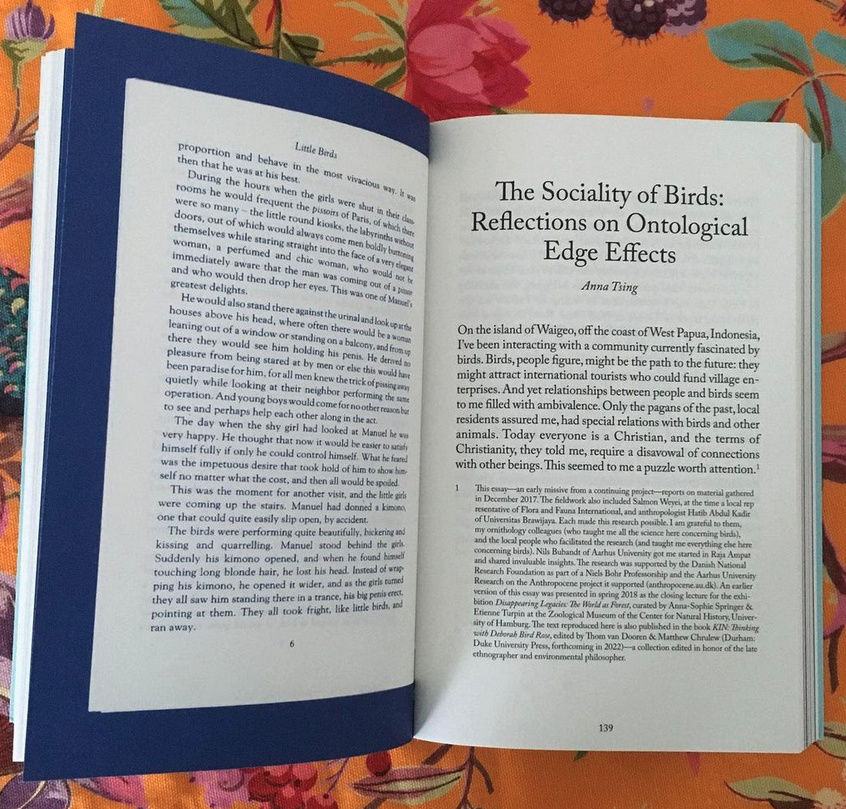
intercalations 6 … is a queer refrain, populated with both acoustical lines of flight and the sorrows of captivity, wherein the reader-as-exhibition-viewer learns that the adventure of ornithology is as preoccupied with the evolutionary meaning of allopreening among avifauna as it is with their taxonomical domination. ── With contributions creating a kaleidoscopic murmuration of minor ornithologies, including pieces on feathers, flight, song, loss, escape, and evasion, as well as a series of poetic reflections, short stories, and theoretical reflections on birds from Aristotle to Anaïs Nin, among many others.
These Birds of Temptation. Edited by Anna-Sophie Springer & Etienne Turpin. With contributions and artworks by Eddie Bartley, Ari Bayuaji, Bik Van der Pol, David Bonter, Xavi Bou, Tiffany Bozic, Lêna Bùi, Bertolt Brecht, Wallace Craig, Mark Dion, Andreas Doepke, Jimmie Durham, Anne Geene, Sophia Gräfe, Mary Ellen Hannibal, Nina Katchadourian, Bernie & Kat Krause, Barbara Marcel, Anaïs Nin, Arjan de Nooy, Megan Prelinger, John Paul Ricco, David Rothenberg, Juliana Spahr, Bruno Schulz, Anna-Sophie Springer, Frank Steinheimer, Yoko Tawada, Anna Tsing, Etienne Turpin, and Francesca Woodman. Design in collaboration with Katharina Tauer.
English
13 x 21 cm
436 pages
Color & black/white images
Softcover, thread-bound
ISBN 978-3-9818635-4-3
Made possible by the Schering Stiftung.
Published by K. Verlag and the Haus der Kulturen der Welt in December 2021
17 July 2020
Interconnection & Multidimensionality
— an interview about forests and exhibition-making with Anna-Sophie Springer by Vida Rucli for Robida #7
This year began with a seemingly never-ending pandemic lockdown, but for RN it was also blessed with Anna-Sophie’s ongoing correspondence with Vida Rucli, one of the founding editors of the magazine Robida. They exchanged about forests and exhibition-making as Vida asked many questions about the collaborative work that went into the intercalations: paginated exhibition series and Disappearing Legacies: The World as Forest. The new issue of the editorial collective that Vida is a part of grew to 336 pages and contains pieces by dozens of contributors; they are published in their respective languages. Below you can download a pdf of Anna-Sophie’s conversation with Vida. Enjoy!
2021 03 25 – 05 29
ponds among ponds: an exhibition of threshold behavior & nested life
— curated by Anna-Sophie Springer & Etienne Turpin at ICA Shanghai
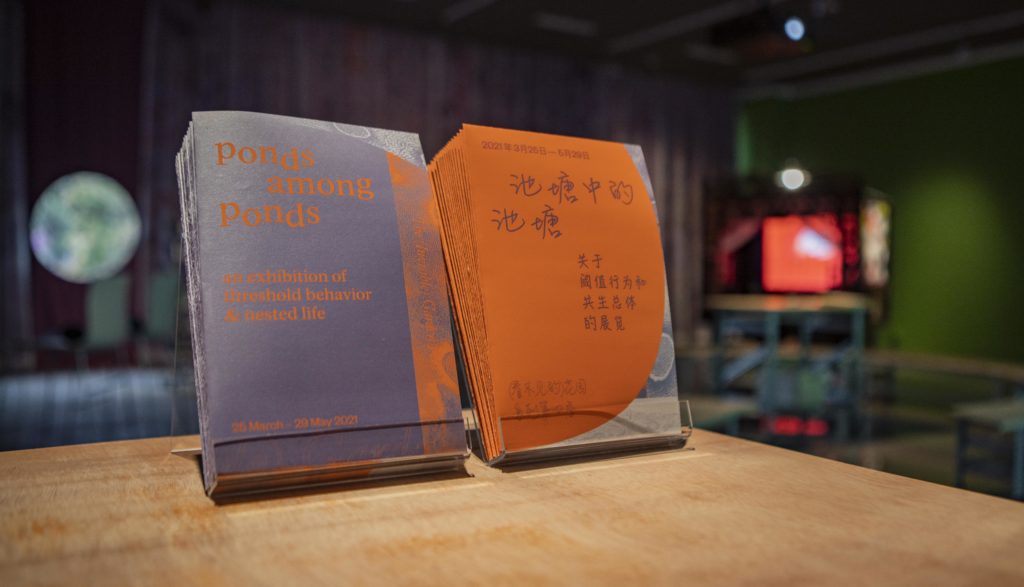
Viruses teach us that we humans are really little more than a multi-species ecosystem among multi-species ecosystems—ponds among ponds. — Tobias Rees, 2020
The exhibition ponds among ponds reconsiders the relationship between organisms and their various endo- and exo-somatic ecologies, while proposing an alternative approach to natural history. Instead of beginning from the assumption that the organism is the basic unit of evolution, what if we consider the multi-scalar, nested ecologies of life as symbiotic webs that challenge linear ideas of competition and survival of the fittest?
ponds among ponds and its related events are presented as the final season of The (Invisible) Garden, a two-year artistic research program that inquires into the garden as a method that shapes our understanding of Nature and our relationships to other species. From Fall 2019 through Spring 2021, the Institute of Contemporary Art at NYU Shanghai presents artists, thinkers, and practitioners, through exhibitions and events, to consider the garden and ask how might we denature Nature?
ponds among ponds features works by:
Agency
Anne Duk Hee Jordan
with Pauline Doutreluingne
John Feldman
with Lynn Margulis
Mao Chenyu
Maximilian Prüfer
Monika Lin
with Zaanheh Project
The exhibition was curated by Anna-Sophie Springer & Etienne Turpin, and was organized by ICA director & curator Michelle Yeonho Hyun with Zhu Sicong, who were assisted by Chen Yijiao, Wang Yuxin, Chen Yindi, and Qin Xiaoyan.
2021 03 27
ponds among ponds: roundtable & virtual film screening
— Talk in the exhibition with curators, artists, & scientists
Sat, 27 Mar, 16:00–17:30 CST / 9:00–10:30 CET
Online Chinese and English
To kick off the public program of ponds among ponds: an exhibition of threshold behaviors & nested life, join the curators Anna-Sophie Springer & Etienne Turpin and the participating artists (Pauline Doutreluingne, Anne Duk Hee Jordan, Monika Lin, Kobe Mattys (Agency), Chenyu Mao, and Maximilian Prüfer), in conversation with scientists from NYU Shanghai, DONG Ningning (Fudan University), Sascha Krause (East China Normal University), PAN Yan (Fudan University), and ZHANG Minhua (East China Normal University), as they discuss the exhibition ponds among ponds and film Symbiotic Earth. The film is available for screening online one week prior to the roundtable discussion, starting on 20 March.
Video recording coming soon
2015–2021
intercalations: paginated exhibition
— six-part series edited by Anna-Sophie Springer & Etienne Turpin

The "intercalations: paginated exhibition" series (2015–21). Photo: K. Verlag
The “intercalations: paginated exhibition” series is an experimental foray exploring the structure of the book as a potential curatorial space. As the reader-as-exhibition-viewer moves through these books-as-exhibition, she discovers that the erratic intercalations of the Anthropocene invite new forms of literacy, visuality, inquiry, and speculation that are, in the words of Clarice Lispector, less promiscuous than they are kaleidoscopic.
This six-part series was developed by Anna-Sophie Springer & Etienne Turpin for the Berlin Haus der Kulturen der Welt’s Anthropocene Project as a commission of the HKW’s Synapse Curators’ Network. It provokes questions about the validity of seeming categorical binaries such as culture and nature, human and non-human, subject and object, book and exhibition. The first volume, “Fantasies of the Library” (2015), inaugurates the series by investigating the book as space, scaffold, and medium for various ecologies of thought. The second volume, “Land & Animal & Nonanimal” (2015), focuses on the postnatural landscapes and specimens of the Earth; “Reverse Hallucinations in the Archipelago” (2017), the third volume, examines the mobility of colonial collections and the environmental transformations they co-produced, elaborating on the world of British naturalist Alfred Russel Wallace and his explorations of the Southeast Asian Malay archipelago in the mid-nineteenth century. Volume four, “The Word for World Is Still Forest” (2017), explores the forest as a set of confounding references of the Anthropocene, while the fifth volume, “Decapitated Economies” (2021), questions the “head” and its underestimation of the sophistication of corporeal desire when such intensities are released in accordance with the principles of a general economy. The final volume of the series, “These Birds of Temptation” (2021), is conceived as a refrain, populated with both acoustical lines of ight and the sorrows of captivity, in order to consider the minor science of ornithology and its various organizational logics. Together, these six volumes are published as printed matter paperback books, as well as web-based, open-access publications, leading their reader-as-exhibition viewers along a series of bifurcating trajectories where curators, artists, scientists, activists, storytellers, and writers pose urgent questions about contemporary struggles for both the cultivation, preservation, and reformation of biomes and their organisms, for land rights and territorial negotiations, and for possible new social, political, and more-than-human life forms.
“intercalations: paginated exhibition” series. Edited by Anna-Sophie Springer & Etienne Turpin; design in collaboration with Katharina Tauer. Made possible by Schering Stiftung.
2021 03 05
More or Less Subdued: Colonial Images & Capital Accumulation
— lecture by Nashin Mahtani & Etienne Turpin for the Architectural Association's HCT & PhD Debates

How does the colonial image persist as a means of extending the violence of colonialism and enabling capital accumulation? Consider two examples: first, according to a 1937 film promoting the overseas possessions of Asiatic Holland, “The Javanese by nature are a quiet and peaceful people more or less subdued by the vertical rays of an equatorial sun, as well as the benevolence of mother nature, who has favoured them with a constant bounty of tropical fruit.” Left out of the film is the structural violence against peoples and ecologies that accompanied the Dutch in Nusantara, as well as all the other means by which Indonesians and their lands were “more or less subdued” to colonial rule and its attendant plunder. It is necessary to remember that the 142-year colonization of Indonesia by the Dutch Empire was preceded by 200 years of asymmetrical mercantilist relations with the Dutch East India Company (VOC). The VOC was the world’s first multinational corporation, one of the most profitable, and the largest corporate entity ever to exist. The first permanent colonial “trading post” was established in Banten in 1603; by 1619, under the direction of the new Governor-General of the VOC, Jan Pieterszoon Coen, the Dutch attacked Indonesia with nineteen ships and seized the site which would become Batavia (and, eventually, Jakarta). Three and a half centuries later, the Dutch controlled territory within the Malay Archipelago fifty times the size of the Netherlands.
A second example: in March 2020, as Dutch construction and engineering firms were aggressively trying to secure construction contracts for the construction of Indonesia’s recently announced “new capital,” Ingrid van Engelshoven, the Dutch minister of culture, accompanied Stijn Schoonderwoerd, the director of Leiden’s Museum of Ethnology, to The Hague in order to return Prince Diponegoro’s kris (a traditional dagger) to Indonesia’s ambassador to the Netherlands, I Gusti Agung Wesaka Puja. (Diponegoro is renowned in Indonesia for leading the most formidable rebellion against Dutch colonial rule; his betrayal in March 1830, under the pretence of a ceasefire, is understood as a defining, treacherous episode in the history of European colonialism in the archipelago.) As an act of postcolonial restitution became the veritable bribery mechanism for neocolonial extraction and lucrative engineering and construction contracts, it is critical to examine how images of repatriation and restitution are made to circulate within the political economy of global capitalism today.
Both of the examples above are borrowed from the video essay “Tidak ada kapital” [There is no capital]; the lecture will unpack these examples, as well as many others from research for the film. The aim is to discuss the role of image production and mediation as a space between discourse and construction wherein it is possible to ask: how can colonial images be put to anti-colonial work? What techniques are involved in their reanimation? What is at stake in practices of postcolonial revisionism? And, how can the revisionist images be dismantled to challenge the dominant narratives of capital accumulation today?
2021 01 20
On Not Being Normal, or, The Whole Anthropocene
— lecture by Etienne Turpin in "LAST CALL - How art & design can stimulate new ideas to address the global environmental emergency," convened by Seoul Institute of the Arts, Korea

In this global webinar organized by The Seoul Institute of the Arts in collaboration with Bandung Institute of Technology and the Amsterdam University of Applied Sciences, South Korea, Etienne Turpin will be the first presenter among a unique group of invited speakers——artists, designers, philosophers, and activists from different communities in Europe, Asia, South and North America——who all share their thoughts, practices, experiences, in order to help us understand how art and design can stimulate the productions of new ideas to address the global environmental emergency.
Opening Message by Prof. Shabhaz Khan (Jakarta, Indonesia), Director of UNESCO Regional Science Bureau for Asia and the Pacific and Representative to Brunei Darussalam, Indonesia, Malaysia, the Philippines, and Timor-Leste.
Speakers: Etienne Turpin (Berlin, Germany), Philosopher & Investigator of international exhibition “Reassembling the Natural,” co-editor of the book “Art in the Anthropocene”; Gwen Cunningham (Dublin, Ireland), Director Circle Economy’s Textiles Programme and coordinator of Sustainability Program at the Amsterdam Fashion Institute; Dwinita Larasati (Bandung, Indonesia), Lecturer at Bandung Institute of Technology and activist at Bandung Creative City Forum; Nam-Jin Park (Ansan, Korea) Professor of Spatial Design at the Seoul Institute of the Arts; Chantal Bilodeau (New York City), Playwright and the Artistic Director of The Arctic Cycle; Claudio Scarabottini & Jared McNeill (Spoleto, Italy), Directors of the immersive opera WEATHER#; Reneltta Arluk (Banff, Canada), Artistic Director Indigenous Arts at Ban Center for Arts; Miguel Juan Leon (Papantla, Mexico), Coordinator of the Center for Indigenous Arts,Totonac translator, Interpreter, Pedagogue; Andrea Lerda (Turin, Italy), Historian, Founder of the online project Platform Green, curator of the Museum of the Mountain.
Closing Message by Cecile Guidote Alvarez (Manila, Philippines), Director of Earthsavers DREAMS Ensemble, UNESCO Artist for Peace, Founder of Philippines Educational Theatre Association and President of the Philippines ITI
Convened & moderated by Andrea Paciotto, Professor of Performing Arts at Seoul Institute of the Arts Director of CultureHub Europe
2021 01 14
Co-opting Natural History
— an online lecture with Anna-Sophie Springer & Etienne Turpin organized by Fieldstations & DAZ Deutsches Architekturzentrum
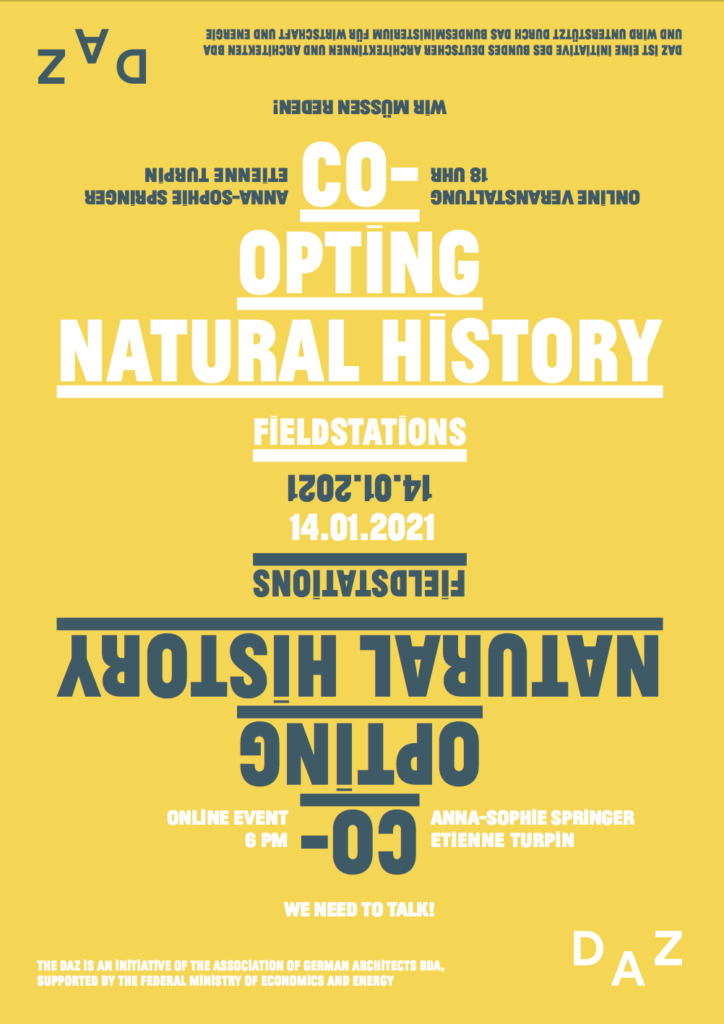
In this invitation by the German Architecture Center (DAZ) Berlin, we will look back at previous projects of the “Reassembling the Natural” cycle and share some considerations motivating our current research in the context of our forthcoming exhibition “ponds among ponds: an exhibition on threshold behavior & nested lift” at the ICA Shanghai (March-May 2021); here, we are interested in how the relationship between organisms proposes alternative approaches to depicting natural history. Instead of beginning from the assumption that the speciated organism is the basic unit of evolution, what if we consider nested ecologies of life as symbiotic kin that challenge ideas of competition and fitness? Following our readings of Lynn Margulis, Ed Young, Scott Gilbert, and David Quammen, among others, we ask, how can novel spatial strategies and interventions in the standard display technologies of the Natural History Museum contribute to de-naturalizing its presentation of human supremacy?
The discoursive event is part of the DAZ series “We need to talk!” curated and moderated by Lidia Gasperoni, Matthias Böttger, and Christophe Barlieb of Fieldstations, an international association promoting research about the Anthropocene; it is produced in cooperation with the Department of Architectural Theory at the Institute for Architecture at TU Berlin.
2021 01 07
Club Donna
— Guest lecture by Anna-Sophie Springer at Peter Behrens School of Art, Hochschule Düsseldorf
In her contribution to CLUB DONNA, Anna-Sophie Springer will share her curatorial-editorial methodologies with the participants of the seminar organized by Sophie Dars & Carlo Menon (Accattone magazine) at Peter Behrens School of Arts, Hochschule Düsseldorf. The seminar is about a renewed relationship to land, matter, “nature,” and localities against the backdrop of the new climate conditions and explores the work of contemporary artists, photographers, architects, botanists, and landscape designers.
2020 12 19
There Is No Capital
— article on "reflections and abandonment in Indonesia" by Nashin Mahtani & Etienne Turpin, Kerb Journal 28/2020

“On 26 August 2019, during one of the first major announcements of his second term as president, Joko Widodo confirmed rumours that Indonesia would move its capital from its sprawling current location along the northern edge of the world’s most populated island, Pulau Java, to the province of East Kalimantan on the neighbouring island of Borneo. According to various studies and assessments, the so-called Capital District of Indonesia, known as ‘DKI Jakarta’, required relocation to address two major issues: chronic seasonal flooding during the Southeast Asian monsoon and excessive land subsidence due to rampant but unregulated groundwater extraction. As one island subsides, another is being mapped as a refuge for carefully selected survivors. In what follows, we explore how this attempt to govern from outside the crisis exemplifies current capitalist reactions to climate change. …”
2020 12 17
Earthseeds #4
— Anna-Sophie Springer joins curator Maria McLintock in a conversation with students from the MA Environmental Architecture, moderated by Mingxin Li, Yutong Wu, and Christina Leigh Geros

Spanning three days, “Earthseeds” is an online exhibition and event series celebrating the work of the cohorts graduating the MA City Design and MA Environmental Architecture at the RCA’s School of Architecture. Led by the student community from both graduating cohorts, “Earthseeds” features talks, conversations, performances and group discussions, focusing on issues of care, the environment, technology, climate, and social justice. The title, “Earthseed,” is in reference to Octavia Butler’s book “Parable of the Sower.” To sow, to care, to adapt, to persist in the face of adversity and to change: a story that speaks to the uniqueness of this year and to our students’ capacity for adaptation and creativity even in the most difficult circumstances.
MA Environmental Architecture, School of Architecture, Royal College of Art London
2020 12 15
The UnNatural History Museum
— invitation for Anna-Sophie Springer & Etienne Turpin as guest critics at the AA, London
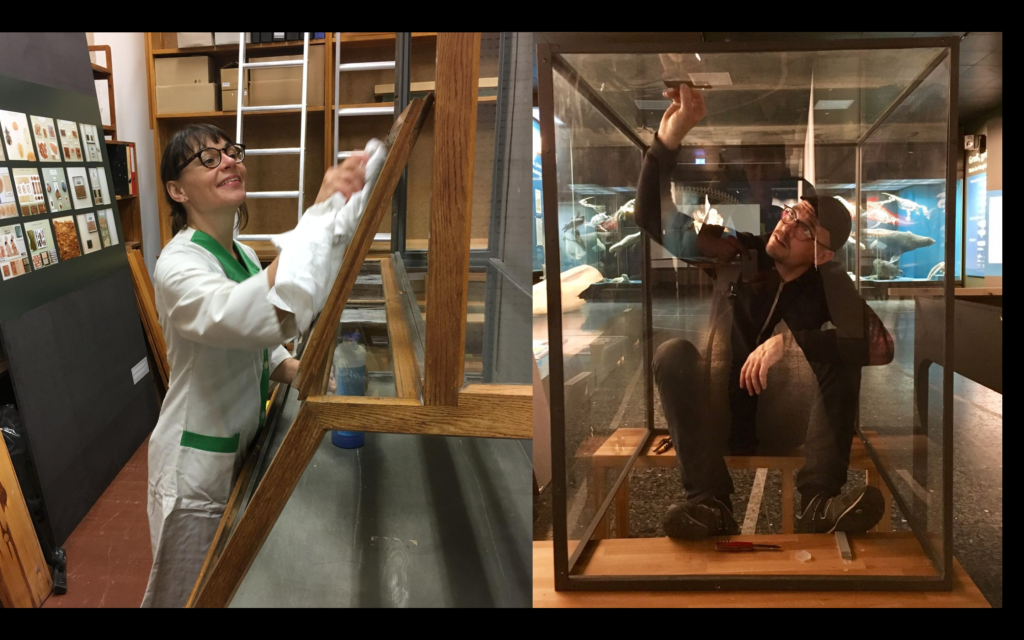
After months of not being able to travel and/or visit the institutions where a lot of our exhibition-led research takes place we look forward to engage with the cohort of students led by tutors Lily Jencks & Jessica Reynolds. In collective and individual projects, the studio class has been exploring the role of the natural history museum in the context of current ecological emergencies. Due to the pandemic constraints, which have prevented the students to be together in London, each one instead engaged with a museum that is local to them in their home country. After identifying a specific local ecological and/or curatorial problem each designed a proposal for an intervention that rethinks the museum’s structure, role, and purpose. We look forward to learning about their ideas and strategies, and to contribute to their reflections via our own experiences gathered through Reassembling the Natural!
The UnNatural History Museum: Unbuilding the Museum Typology, a year-long experimental studio led by tutors Lily Jencks & Jessica Reynolds at the Architectural Association 2020–21
2020 09 18
silvopasture works
— a video screening program curated by Anna-Sophie Springer for "I Never Read Basel Art Book Fair 2020" @ Schaulager Basel, 3–9 pm & @ Fahrbereitschaft Berlin, 7–9 pm
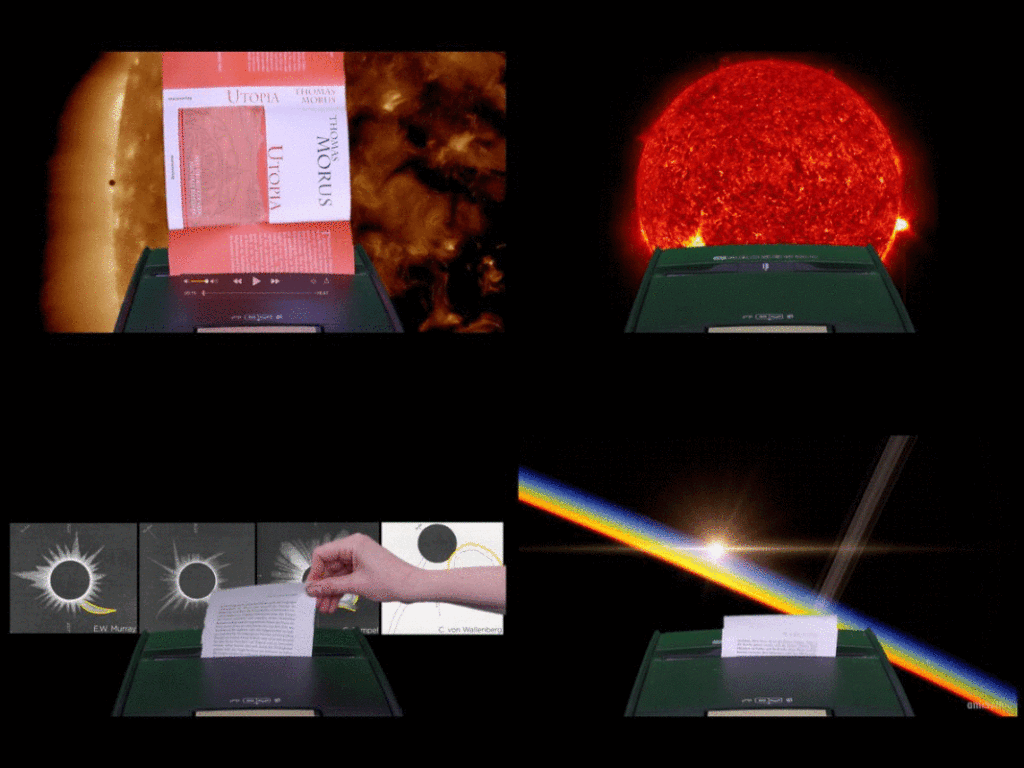
With “silvopasture works,” Anna-Sophie Springer curated a video program featuring the beautiful work of 15 visual artists, for “I Never Read,” Art Book Fair Basel 2020. In its ninth year, Basel ABF focuses on stories that reveal the explosive nature of current political, ecological, and economic realities. In addition to the presentations of international publishers, these themes are considered in mini-exhibitions, a radio and performance program as well as three outdoor screening programs, including “silvopasture works,” which are broadcast on the 7×5 meter LED-screen on Schaulager building’s facade.
About the Video Program:
Convening artists from all over the world, this video program is inspired by the practice of silvopasture. Silvopasture is an integrated, holistic approach to agriculture and forestry that allows all types of organisms involved to benefit in mutual ways, forming a balance that supports and co-nourishes each participant across various scales. A tradition of living-with familiar to Indigenous communities on all continents, silvopasture is an act of resistance and sustenance that understands planetary life as compositional and collective.
As a complementary approach, silvoculture resonates with independent publishing as a dynamic and collaborative practice nurtured by reciprocity, multiplication, and (re-)distribution; gathering and cultivating ecologies of careful attention, knowing, and sensing on varying scales, from the smallness of a single letter, word, or image to bigger assemblages like the book, a visual sequence, a print-run, a group of positions and voices, a shelf, a book fair, or the world.
In this spirit, the pieces shared by comrades in silvopasture works address survival and disappearance from many different vantage points, some using a more documentary approach, while others offer more poetic interventions. Together, the works in print, video, and photography suggest repertoires of interdependence in both love and struggle.
Featuring work by:
Elisa Balmaceda
Rosa Barba
Priyanka Basu & Steve Rowell
Carolina Borrero Arias
Dora García
Ana Hupe
Geraldine Juárez
Armin Linke
Hanna Mattes
Martina Pozzan
Ela Spalding
Joel Tauber
Raul Walch
Tania Willard
Curated by Anna-Sophie Springer. With thanks to all participants for the wonderful collaboration and to Eveline Wüthrich for the beautiful opportunity.
2020 09 08 – 10 04
"Musa × paradisiaca L." by Martina Pozzan
— photographic display at The Blackwood Gallery, University of Toronto Mississauga
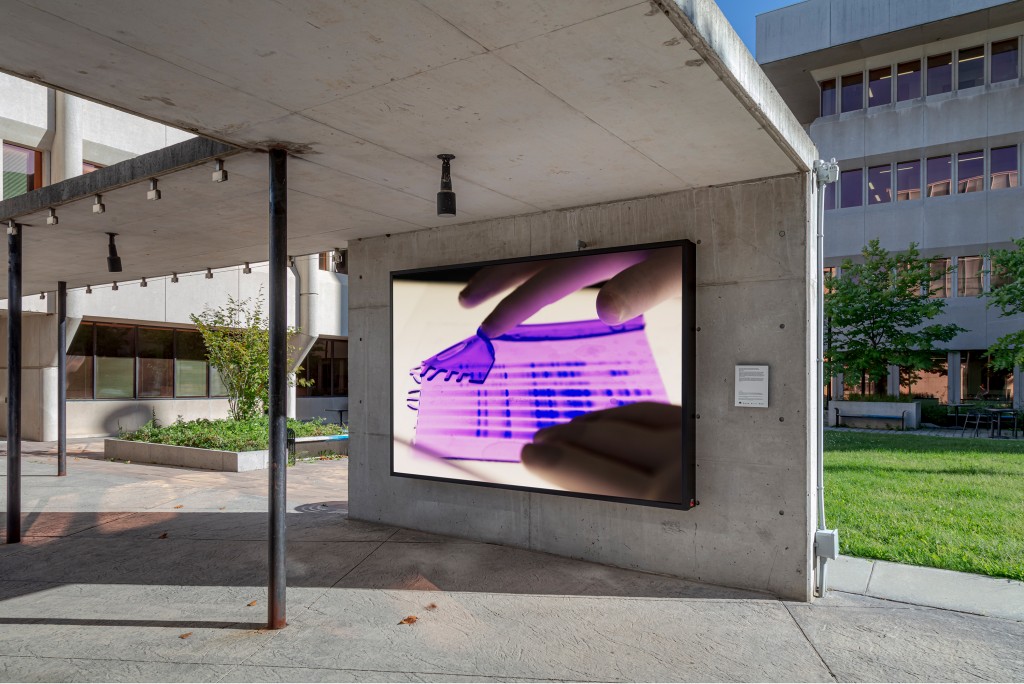
In Fall 2020, the exhibition “Naturecolony” (curated by Anna-Sophie Springer & Etienne Turpin) was planned to take place at The Blackwood Gallery, University of Toronto Mississauga. A new instantiation of our “Reassembling the Natural” project, this interdisciplinary exhibition was focusing on histories of colonial transactions in the Western hemisphere and had been in the works for two years—when it was abruptly called off in May due to the extended campus closures during the Sars-Cov-2 pandemic. Luckily, one position—by Martina Pozzan—which was already produced to be displayed in the outdoor area of the university campus, emerged as a solo installation. With her research project “Musa × paradisiaca L.” Pozzan explores the messy space between natural and artificial dimensions of botanical collecting. In vitro propagation methods, seed banks, and both cryogenic and living collections operate at the intersection of technoscientific research and the market-driven commodification of life itself. The photographic series displayed focuses on techniques of biological multiplication in the service of capital accumulation.
April 2020
Catalog: Verschwindende Vermächtnisse: Die Welt als Wald
— inhabiting the Yearbook of the Natural History Collections Halle/Saale

This publication takes on the format of the Yearbook of the Natural History Collections at Martin-Luther-Universität Halle-Wittenberg. It gathers reflections and summaries of the three-part traveling exhibition Verschwindende Vermächtnisse: Die Welt als Wald / Disappearing Legacies: The World as Forest, which after nearly three years of archive and field research took its final sojourn in the building of the Natural History Collections from October to December 2018.
The World as Forest examined the legacies of the nineteenth-century naturalist Alfred Russel Wallace, especially by revisiting his two major collecting expeditions. Wallace, a younger contemporary of Charles Darwin, and his co-discoverer of the theory of evolution by natural selection, traveled to the Brazilian Amazon and Rio Negro from 1848 to 1852, and later to the Malay Archipelago between 1854 to 1862. Funded by the German Federal Cultural Foundation and other partners, the exhibition considered how colonial archives of nature can be mobilized, disassembled, framed, and read in ways that enable a discussion of urgent ecological and systemic questions of injustice today. It convened more than eighteen international artists and activists, including eight new commissions of time- and object-based installations which addressed urgent contemporary issues in Amazonia and Nusantara; these artworks were exhibited alongside a series of curatorial assemblages presenting specimens, artifacts and archival material—all of which intervened in the natural history museum displays and their respective scenographies.
This retroactive publication includes full-page color photographs of the exhibition setting at the Zentralmagazin Naturwissenschaftlicher Sammlungen in Halle/Saale; it offers contextualizations of all participating artists and their works as well as a selection of related essays and interviews; especially interesting for German readers is the translation of anthropologist Anna Tsing’s thought-provoking essay “Earth Stalked by Man: A Feminist Approach to the Anthropocene” (2016).
Reassembling the Natural thanks Dr. Frank Steinheimer, Head of the Natural History Collections in Halle/Saale for the opportunity to make this publication.
August 2019
Compensatory Postures: Natural History, Necroaesthetics, and Humiliation
— essay by Anna-Sophie Springer & Etienne Turpin in "Theater, Garden, Bestiary: A Materialist History of Exhibitions," eds. Tristan Garcia & Vincent Normand
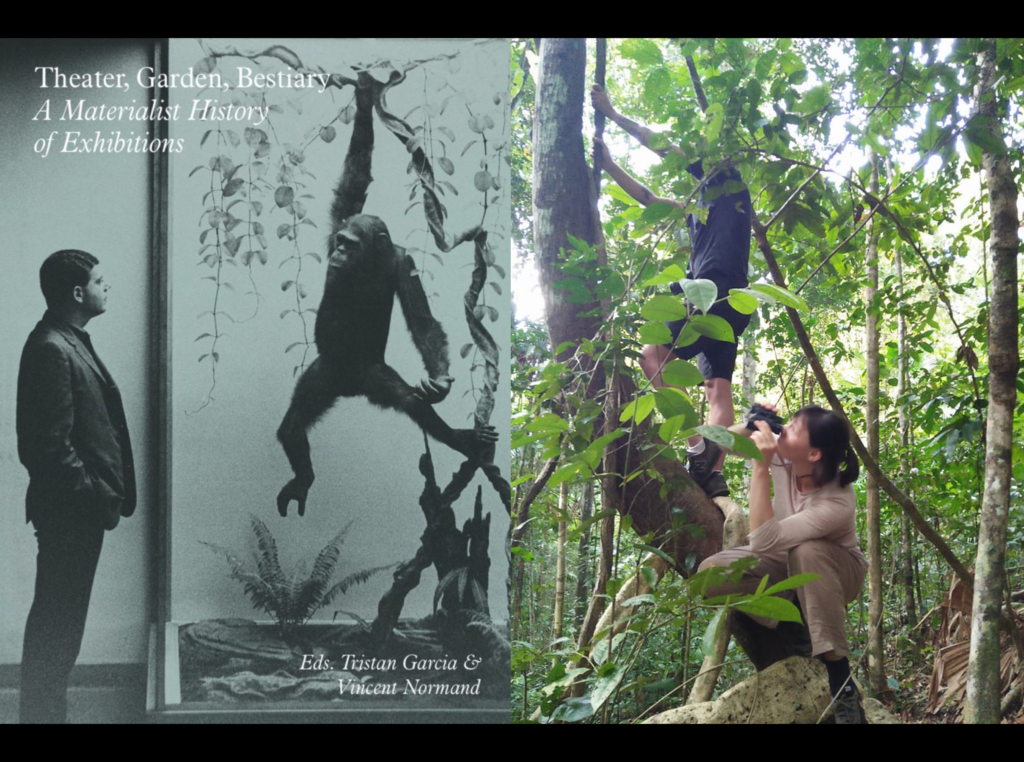
In this new essay we revisit our curatorial methodology of Reassembling the Natural by focusing on our fieldwork and collection research about the coloniality of ornithological science, especially regarding the tropical birds of paradise. The text was commissioned by Tristan Garcia & Vincent Normand for their edited publication Theater, Garden, Bestiary: A Materialist History of Exhibitions. The book follows the academic workshop series at ECAL Lausanne, where we first presented aspects of our work presented in the essay back in April 2016. The book also includes texts by Etienne Chambaud, Elitze Dulguerova, Anselm Franke, Tristan Garcia, Fabien Giraud & Raphael Siboni, Dorothea von Hantelmann, Yuk Hui, Pierre Huyghe, Jeremy Lecomte, Stéphane Lojkine, Sami Khatib, Rafael Mandressi, Vincent Normand, Peter Osborne, Filipa Ramos, Juliane Rebentisch, Joao Ribas, Pamela Rosenkranz, Lucy Steeds, Olivier Surel, Kim West, and Charles Wolfe. Published by Sternberg Press in August 2019.
[ more ]
2019 04 10
nest / nested / nesting
— "The Politics of Design," a conference and panel with Etienne Turpin et al. at the "Broken Nature" Triennale Milano at Teatro dell’Arte

The interdisciplinary conference titled »The Politics of Design« was hosted by the Vitra Design Museum at the Triennale Milano on 10 April 2019 as part of Milan Design Week 2019. An international group of high-profile experts from various backgrounds including design, design theory, philosophy, sociology, and political economy took part in three panels – Design and Post-Industry, Design and Post-Governance, as well as Design and Post-Nature. Speakers such as Paola Antonelli, Bruce Sterling, Danah Abdulla, Jan Boelen, Claudia Chwalisz, Indy Johar, Amelie Klein and Etienne Turpin discussed design’s changing role and responsibilities in the 21st century. The conference aimed to foster debate surrounding design’s political relevance and embraced ambiguity and contradiction in an increasingly complex and conflict-ridden world. It aimed to serve as a transformative agent for the classical design industries and to initiate a wider discussion about a design that recognizes its responsibility to society and the planet.
2018 02 28
Biomonotony
— essay by Etienne Turpin in the catalog for the "Broken Nature" XXII Triennale di Milano
The XXII Triennale di Milano, Broken Nature: Design Takes on Human Survival, highlights the concept of restorative design and studies the state of the threads that connect humans to their natural environments—some frayed, others altogether severed.
Etienne Turpin’s essay “Biomonotony” is included in the exhibition catalog; it is accompanied by Martina Pozzan’s photographic research Musa x paradisiaca L. on “micropropagation” of plants in the lab; a commercial plant multiplication technique that offers genetically identical shoots for plantations and orchards.
2019 01 09–13
Prototype for a Museum of Man
— a workshop at the (Un)-Learning Place: The New Alphabet School, Haus der Kulturen der Welt Berlin
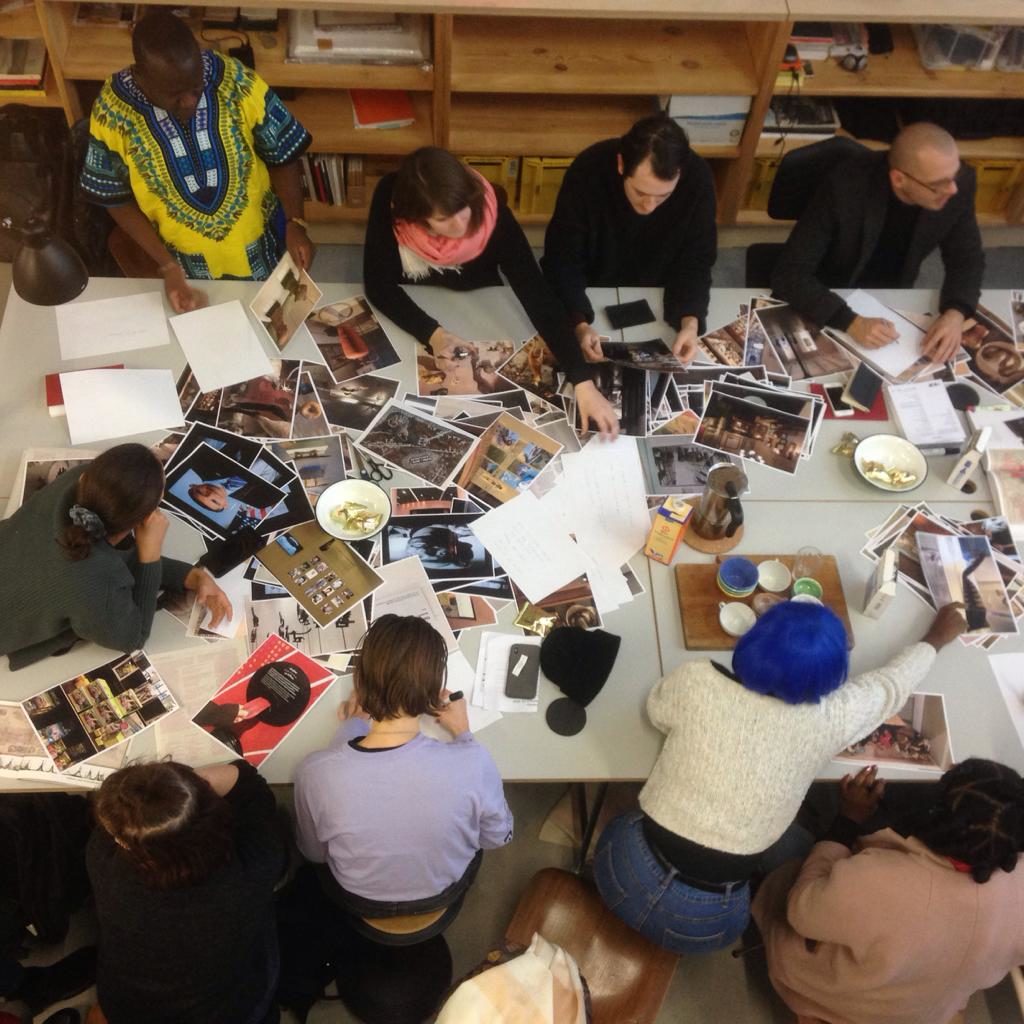
The seminar “The New Education: Denaturalizing the Cultural Pedagogy of Museum Technologies” explores the traditional belief in human exceptionalism as one of the foundational principles of museum traditions. The goal of this week-long event, conceived by Anna-Sophie Springer & Etienne Turpin with Andreas Doepke for The New Alphabet School at Haus der Kulturen der Welt Berlin, is a collaborative research process for participants to better create and better understand a global-yet-partial taxonomy of the technologies of human exceptionalism in museological culture past and present. The group’s findings will be presented under the title “An Incomplete Museum of Anthroposupremacism” during the Opening Days of the Haus der Kulturen’s new two year cycle “The New Alphabet.” The curriculum event “(Un-)Learning Place” is curated by Boris Buden and Olga von Schubert; it brings convenes 80 international participants in a week-long workshop series led by eight Berlin-based collectives from the scenes of art, culture, and activism with the aim to develop transdisciplinary, decolonial, and anti-hegemonic strategies in relation to data-based knowledge, translation, archives, and embodied infrastructures.
2018 11 23
On Networks & Colliding Voices – On Air with Tomás Saraceno
— a one-day discursive event at the Palais de Tokyo, Paris
On invitation Studio Tomás Saraceno, Anna-Sophie Springer & Etienne Turpin have prepared the one-day discursive event “On Networks & Colliding Voices” with a keynote by Bruno Latour, and talks and performances by d’bi.young anitafrika, Albert-László Barabási, Fernando Ferroni, Vincenzo Napolano, Lisa Randall, Bronislaw Szerszinski, and Estelle Zhong Mengual. The event is moderated by Anna-Sophie & Etienne together with Tomás Saraceno on the occasion of the artist’s current exhibition “ON AIR” at Palais de Tokyo in Paris.
2018 11 12
Species of Exchange – Circulation of Species
— invited lecture by Anna-Sophie Springer at ETH Zurich, Design and Architecture Faculty
“Ecologies: Session on Territory, Urbanism, and the Anthropocene” is a series of public debates on the political economy of architecture and territory. Focusing on how the epoch of the Anthropocene reframes our conceptions of the urban and shapes new ecologies, the seminar’s objective is to unravel contemporary forces at work in the formation of the built and natural environment, and, as importantly to spur debates that challenge the status quo. Every intervention by a guest speaker is followed by a panel discussion with invited respondents. In this lecture, Anna-Sophie Springer will discuss a series of recent research and projects including the exhibition “Disappearing Legacies: The World as Forest.” The event will be moderated by Dubravka Seculic. Thank you to Marc Angelil for the kind invitation.
2018 10 30 – 11 01
Dickering for Emperor Birds and Macho Ferns
— invited conference paper by Anna-Sophie Springer to the panel "More-Than-Human Imperial Legacies in the Capitalocene" at Max-Planck-Institut Göttingen

“Scientific expeditions were crucial to projects of colonial expansion and contributed to accruing imperial prestige. The aspiration to dominate nature was intrinsic to imperial demonstrations of power that, as evidence of their superiority, sought to conquer and tame far away landscapes inhabited by exoticized humans and non-humans. The impressive amount of ethnographic objects, plants and animals collected—or rather, amassed and appropriated—over the centuries built the foundation for natural history museums as well as botanical gardens and zoos across Europe. This panel sets to explore how imperial ecological legacies and narratives reverberate in the Capitalocene. Moving beyond imperial (hi)stories that centre on the human experience, we find it crucial to contextualize imperial trajectories in environmental destruction and violence by extending our attention to the increasingly precarious livelihoods of nonhuman actors. The panel stimulates debate on how ‘nature’ remembers and provides us with rich archives that may enlighten our understanding of how institutions, practices, and ethics that originated under imperialism (e.g. natural history museums, forest management, hunting rights, and animal diplomacy) still figure today.” The conference at MPI Göttingen is organized by Annika Kirbis and colleagues; more info on program and other participants below
2018 10 19
Verschwindende Vermächtnisse 3 opens at Natural History Collections Halle/Saale
— new exhibition in the cycle "Disappearing Legacies: The World as Forest"
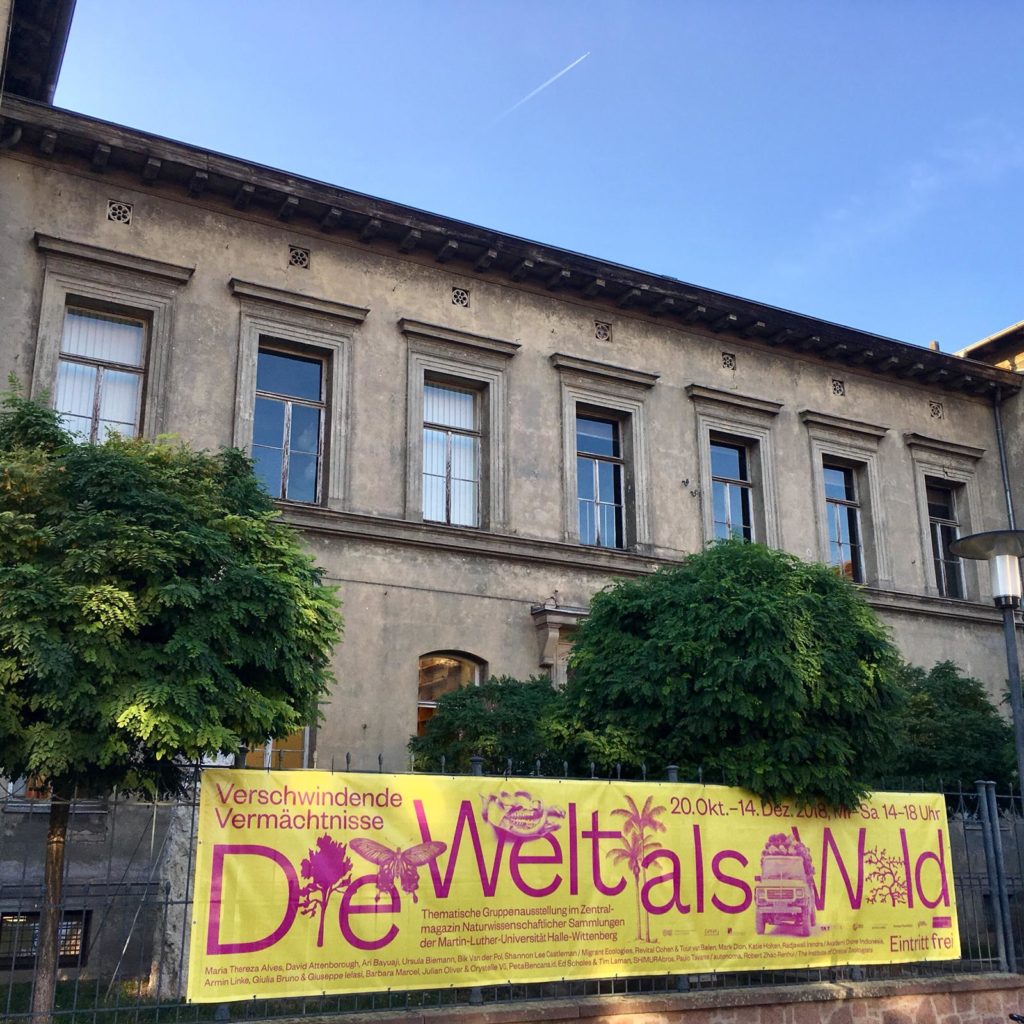
Opening: 19 October 2018, 19h00
Zentralmagazin Naturwissenschaftlicher Sammlungen
Martin-Luther-Universität Halle/Wittenberg
Domplatz 4
D-06108 Halle/Saale
The third iteration of the exhibition is approaching fast! Save the date for the opening of Verschwindende Vermächtnisse: Die Welt als Wald [Disappearing Legacies: The World as Forest] in the Natural History Collections of Martin Luther University in Halle/Saale, which will be installed throughout the entire building—which is normally not accessible to the public.
The exhibition presents contemporary artworks and curatorial assemblages that renounce a romantic notion of untouched nature. Fifteen installations, photographs, sculptures, and moving-image works (including eight new commissions) draw connections between Alfred Russel Wallace’s nineteenth-century expeditions to Amazonia and Southeast Asia and current urgencies of ecological decline. Although the exhibition follows selected historical traces and archival records, Disappearing Legacies is not a “great man of science” biographical retrospective. Instead, by appropriating certain formal elements of this exhibition trope, the project considers how colonial natural history collections can be mobilized, disassembled, framed, and read in ways that enable a discussion of urgent ecological and systemic injustices today—whether in the Anthropocene, Capitalocene, or Plantationocene. “Disappearing Legacies: The World as Forest” asks: Can—and if so, how can—a colonial archive become a departure point for a conversation about other ways of knowing, reading, and sensing the heterogeneity of nature as it is voiced by international artists, scientists, and activists? In response to this question, the exhibition celebrates diversity and biodiversity, challenging aesthetic and agricultural monocultures by interrogating the modern colonial legacies that perpetuate epistemicide and ecocide.
What kinds of narration can we re-activate or invent? Which human and non-human ways of life are fostered, cultivated, or engendered elsewhere, and how can we support these in defiance of the continued impoverishment of the world?
Participating artists:
Maria Thereza Alves
Ari Bayuaji
Bik Van der Pol
Ursula Biemann
Shannon Lee Castleman/Migrant Ecologies
Revital Cohen & Tuur van Balen
Mark Dion
Radjawali Irendra / Akademi Drone Indonesia
Armin Linke with Giulia Bruno and Giuseppe Ielasi
Barbara Marcel
Julian Oliver & Crystelle Vu
PetaBencana.id
SHIMURAbros
Paulo Tavares / autonoma
Robert Zhao Renhui / The Institute of Critical Zoologists
2018 08 24
The World as Forest: bilingual exhibition guide
— in print & pdf format
The free guide accompanying the three-part travelling exhibition “Verschwindende Vermächtnisse: Die Welt als Wald” [Disappearing Legacies: The World as Forest] is now available! This publication offers contextualizations of all participating artists and their works as well as a selection of related essays and interviews. Edited by Anna-Sophie Springer & Etienne Turpin, with additional texts by Maria Thereza Alves, Andrew Berry, Matthias Glaubrecht, Felix Sattler, Anna-Sophie Springer & Etienne Turpin, Frank Steinheimer, Zenzi Suhadi, Paulo Tavares, Anna Tsing. German translations by Anna-Sophie Springer & Monika Springer. Design by Wolfgang Hückel & Katharina Tauer. Published by K. Verlag. Made possible by a publication grant of the Graham Foundation.
2018 08 25
Thinking Like a Mountain (2018) by Alexander Hick
—double film screening during finnissage of The World as Forest
The Berlin iteration of Disappearing Legacies: The World as Forest ends with a screening of Alexander Hick’s film Thinking Like a Mountain. Combining essayistic and documentary styles, the film draws a portrait of the extraordinary resistance of the Arhuaco Indigenous people of the high Sierra Nevada in Colombia. The presentation of the film at Tieranatomisches Theater is the team premiere in Berlin after the film has only be screened once before at Visions du reel in Nyon.
Screenings are at 21h00 and 23h00—first come first get a place. Please note that you need a ticket for the Long Night of the Museums that is also happening tonight throughout the city.
July 2018
Exhibition as Philosophical Problem / Die Ausstellung als philosophisches Problem
— essay by Anna-Sophie Springer & Etienne Turpin in Grazer Architecture Magazine

In this essay we ask: “How to present and disseminate […] knowledge as a way of co-producing it? Exhibition is thus a philosophical problem that travels along with the thematic or conceptual research we do; what, when, and how to exhibit a given set of concerns or ways of working, of various epistemological trajectories or commitments, of intersecting or interfering versions of a given narrative? […] We approach exhibitions, like any other philosophical problem, as a way of interfacing with what we don’t yet know how to present, but that we nevertheless feel requires a form for exposition.”
GAM 14 “Exhibiting Matters” was edited by Milica Tomic and Dubravka Sekulic. With contributions by Bart De Baere, Ivana Bago, Ana Bezić, Nicolas Bourriaud, Maria Bremer, Ekaterina Degot, Ana Dević, Anselm Franke, Andrew Herscher, Christian Inderbitzin, Branislav Jakovljević, Sami Khatib, Wilfried Kuehn, Nicole Lai Yi-Hsin, Bruno Latour, Ana María León, Armin Linke, Antonia Majača, Doreen Mende, Ana Miljački, Museum of American Art in Berlin, Vincent Normand, Christoph Walter Pirker, Dubravka Sekuli, Antje Senarclens de Grancy, Katharina Sommer, Anna-Sophie Springer, Barbara Steiner, Kate Strain, Žiga Testen, Milica Tomić, Etienne Turpin, and What, How & for Whom/WHW.
2018 04 28 – 08 25
HOW ON EARTH?
— discourse program at Tieranatomisches Theater
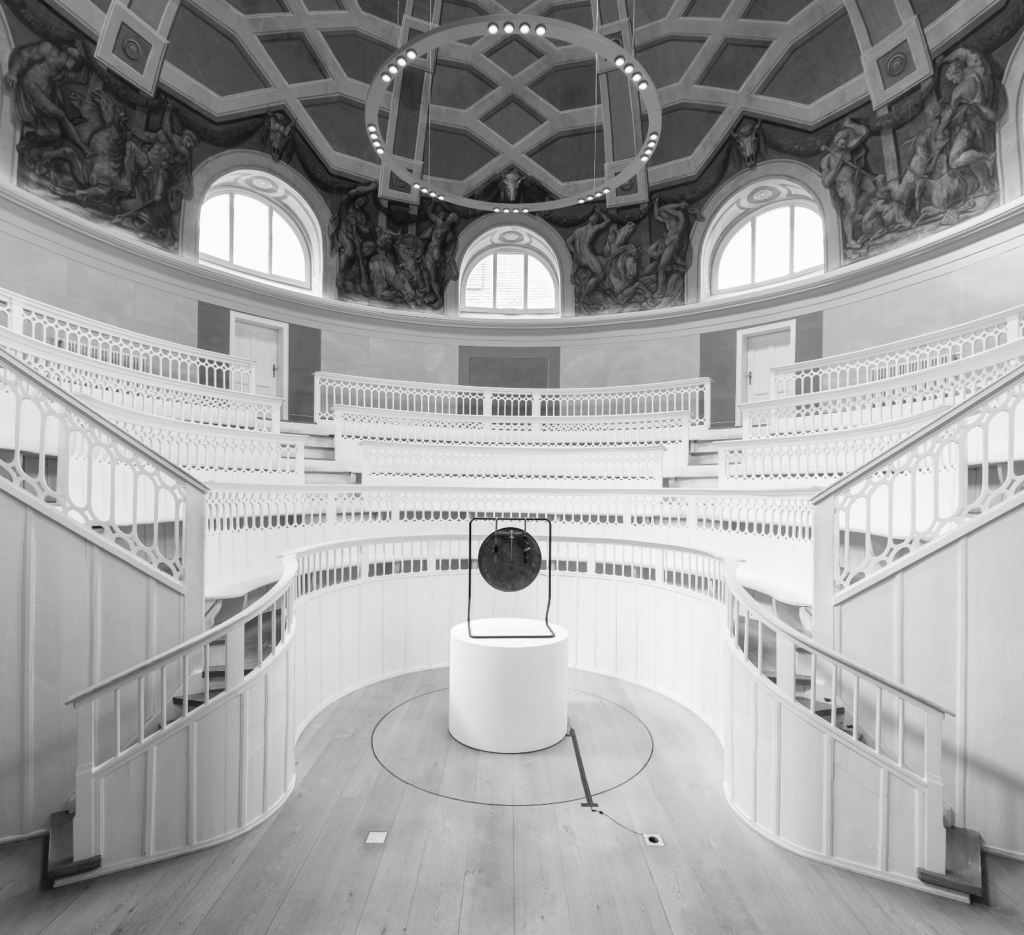
Many inherited images of nature are no longer adequate given the realities of mass extinction, anthropogenic climate change, and deforestation. Have current forms of land use transformation, ecological disturbance, and species extermination produced a troubled new natural history? The discursive program How on Earth? addresses this and other urgent questions about nature, colonialism, and care in the Anthropocene through a series of lectures, discussions, screenings, and guided tours.
24/08 from pulp and paper
19h30 Publication talks with Armin Linke, Doreen Mende, Dubravka Sekulic, Milica Tomic (GAM, TU Graz), Leah Whitman-Salkin (Harvard Design Magazin), and others [en] >>>> detailed program here
25/08 thinking with the earth
During the Long Night of the Museums**:
18h00 Exhibition guided tour [de]
19h30 Lecture by Hannah Meszaros-Martin (Goldsmiths) [en]
20h15 Lecture by Kenny Cupers (Universität Basel) [en]
21h00 Screening of Thinking Like A Mountain, 2018 [de with en subtitles] followed by a Q&A with the director Alexander Hick and a closing panel with all guests, exhibition curators, and Anselm Franke [en]
23h00 Exhibition guided tour [de]
>>>> detailed program here
**a ticket for the Long Nights is required
Past events:
28/04 inhabiting nature
15–16h00 Curators’ tours [de/en]
16–19h00 Artists’ talks by Barbara Marcel, Crystelle Vũ, and others; followed by lectures by Shannon Mattern (New School) and Birgit Schneider (Potsdam University) [en]
>>>> detailed program here
09/06 imaging & imagining nature
During the Long Night of Science:
19h00 Curators’ tours [de/en] and artist’s talk by Maria Thereza Alves [en]
23h00 Exhibition guided tour [de]
>>>> detailed program here
26/06 consuming a planet
20h00 Lectures by researcher Seth Denizen, Max Haiven (Lakehead University), and Shela Sheikh (Goldsmiths) [en]; followed by a screening of Europium, 2014 [en with de subtitles] and a panel discussion with the artist/director Lisa Rave [en]
>>>> detailed program here
03/07 becoming extinct
19h30 “Provisioning Crows: Ecologies of Hope in the Mariana Islands,” lecture by environmental philosopher Thom van Dooren (University of Sydney); followed by a screening of Point of No Return, 2015 [en with de subtitles] and a panel discussion with the artist/director Antje Engelmann [en]
>>>> detailed program here
12/08 replicating nature
10 – 19h30 Day trip excursion with Bik Van Der Pol to the artificial Vesuvio at Schloß Wörlitz and the Naumann Ornithological Collection at Museum Köthen [registration required]
>>>> detailed program here
Entry to the exhibition and the discursive program is free.
For events taking place during the Long Night of Science
(9 June, 17–24h00) and the Long Night of the Museums
(25 August, 18–2h00) separate tickets for the Long Nights are required.
[Photo: Julian Oliver & Crystelle Vũ, “The Extinction Gong,” 2017/18 in the auditorium of the Tieranatomisches Theater Berlin; documentation by Michael Pfisterer.]
2018 07 20
VV exhibition review in HyperAllergic
— Ben Valentine writes about "The Extinction Gong" by Julian Oliver & Crystelle Vũ

“The automation of [Oliver & Vũ’s] Extinction Gong troubles the direness of the event it commemorates. My initial reaction to the installation was that this is a tacky ceremony for such a bleak event. How can we not even muster the energy to give a heartfelt elegy by voice or hand? But then, isn’t it so fitting too? The technology and automation remind us that capitalism has gone on autopilot, and must expand, develop, mine, and drill, baby, drill, ever more, no matter the cost. Maybe we’ll walk ourselves into extinction playing Pokemon Go. ‘So precarious and complex is our planetary situation today,’ Vũ and Oliver told me, ‘that in order to understand our way through this, we have to heavily lean on our our technology. The irony of a computer controlled instrument signaling the rate of extinction is something we appreciate about the piece.’” (Photo above by Michael Pfisterer for Reassembling the Natural)
2018 06 18
VV exhibition review by Adela Yawitz
— in HyperAllergic

“The current exhibition on view is ‘Disappearing Legacies: The World as Forest,’ curated by Anna-Sophie Springer and Etienne Turpin. Their trilogy of exhibitions in natural science museums across Germany is based on extensive research of received Western knowledge and ideas about nature, which they contextualize with parallel, post-colonial narratives, as well as with contemporary art. The exhibition at the anatomical theater unpacks the Western projection of the rainforest as an image of wild growth, devoid of humans, an environment so diverse and bursting with life forms that it exceeds man’s scientific categorizations. It frames the rainforest as a Western fantasy land, born together with Colonial explorations, which provides endless ‘material’ for the botanist, the explorer, or the artist. The exhibition contextualizes the rainforest in different ways, for instance, by making connections between influential German evolutionary scientists and their ties to German colonies in Papua New Guinea.” (Photo above by Martina Pozzan for Reassembling the Natural)
2018 05 03
Goldsmiths Warden's Annual Public Engagement Award 2018
— Anna-Sophie receives the Commendation award for "Disappearing Legacies: The World as Forest"

Every year, Pat Loughrey, the Warden of Goldsmiths, University of London, distributes a series of Public Engagement Awards in three main categories. These awards recognize and celebrate the excellent work researchers at all career stages do with members of the public, whether they’re sharing ground-breaking findings with new audiences or collaborating with the public throughout their research.
In Spring 2018, Anna-Sophie Springer was selected to receive the “Commendation” in the Postgraduate Researcher category for her work as co-curator of the first round of the exhibition “Verschwindende Vermächtniss:Die Welt als Wald” at the Zoological Museum Hamburg. The Winner in this category is Tom Keene for his project “Database Estate.” The Winner in the Established Researcher category is Prof Jennifer Gabrys for “Deptfort Data Stories.”
Quoting Warden Pat Loughrey’s Welcome Address:
“An exceptional range of innovative activities and projects were nominated by Goldsmiths staff, showcasing different approaches to engaging the public with research and practice. Our researchers worked with organisations like the BFI, the Labour Party, the Zoological Museum Hamburg and Parliament to engage diverse audiences through film, performance, art and citizen science.
There was a real sense that researchers, partners and the public benefited from this work, demonstrating how research in the arts, humanities, social sciences and computing can create positive change in the world. I would like to take this opportunity to congratulate all of the nominees, whose work with the public is a real asset to Goldsmiths and an example to our community, and beyond.”
2018 04 26 – 08 26
Verschwindende Vermächtnisse 2 opens at Tieranatomisches Theater Berlin
— new exhibition in the cycle "Disappearing Legacies: The World as Forest"

“Media Ornithology in Paradise,” curatorial assemblage in the exhibition “Disappearing Legacies: The World as Forest” (Berlin edition, 2018). Photo: M. Pfisterer for Reassembling the Natural
Opening: 26 April 2018, 19h00
Tieranatomisches Theater (TA T)
Raum für forschende Ausstellungspraxis
Humboldt-Universität zu Berlin
Philippstraße 12/13
10115 Berlin
Please join us for the opening of the second iteration of Verschwindende Vermächtnisse: Die Welt als Wald in the former animal anatomical theater of Berlin’s Humboldt-University, the Tieranatomisches Theater. 160 years after the publication of the theory of evolution by natural selection, this ambitious exhibition departs from the expeditions of naturalist Alfred Russel Wallace in the nineteenth century to examine the current disappearance of rainforests in Southeast Asia and South America. The artistic positions and curatorial assemblages presented in this exhibition renounce a romantic image of untouched nature, and instead critically inquire into the legacies resulting from the relentless destruction of highly complex ecosystems. In addition to contemporary art, zoological and botanical objects from the collections of the Humboldt-University and the University of Hamburg can also be seen.
The exhibition runs until the end of August and includes the discursive program HOW ON EARTH? beginning 28 April (details above).
The participating artists are:
Maria Thereza Alves
Ari Bayuaji
Bik Van der Pol
Shannon Lee Castleman/Migrant Ecologies
Revital Cohen & Tuur van Balen
Mark Dion
Katie Holten
Radjawali Irendra / Akademi Drone Indonesia
Armin Linke with Giulia Bruno and Giuseppe Ielasi
Barbara Marcel
Julian Oliver & Crystelle Vu
PetaBencana.id
SHIMURAbros
Paulo Tavares / autonoma
Robert Zhao Renhui / The Institute of Critical Zoologists
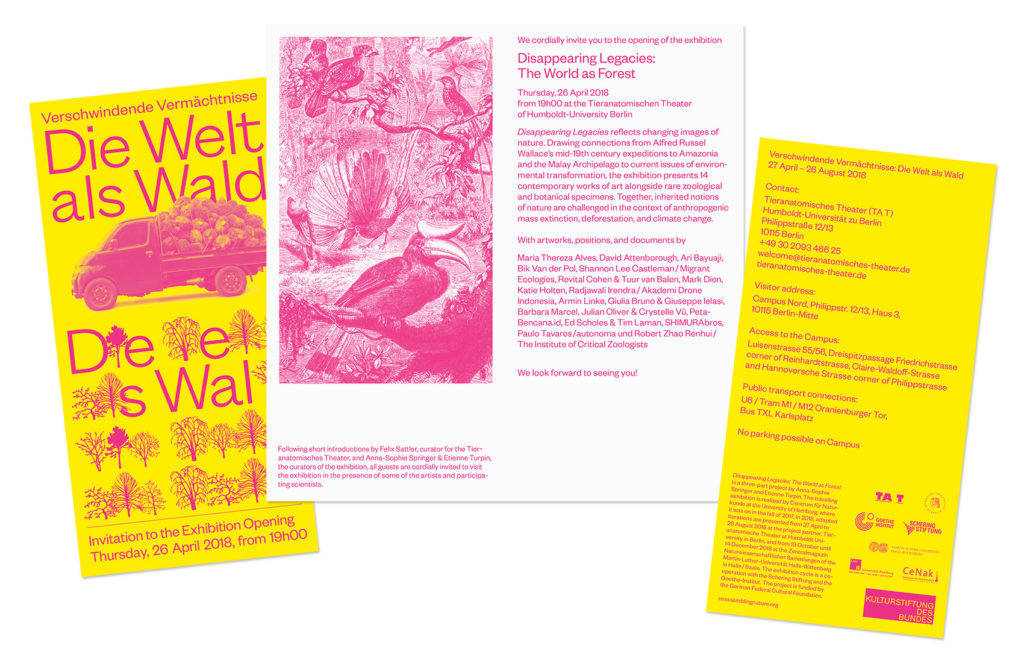
2018 06 09
Posthuman/Nature
— a panel discussion with Isabelle Doucet, Paulo Tavares, and Etienne Turpin as part of "Architecture and/for the Environment, CCA Montreal

Still from Paulo Tavares/autonoma in collaboration with the Bö’u Xavante Association "Trees, Vines, Palms, and Other Architectural Monuments," 2017–18, in Verschwindende Vermächtnisse
The multidisciplinary research Mellon-project Architecture and/for the Environment at the Canadian Centre for Architecture in Montreal (2017–18) proposes to rethink the discipline of architecture by offering a different understanding of how architecture and the environment have been co-produced. While cross-disciplinary attention, including that of architecture, has focused on the new realities of the Anthropocene, architecture’s complex historical relationship to nature has yet to be surveyed. We fear that the pragmatic, techno-utopian, or even environmentalist stances that have monopolized the subject do not equip us to face the challenges ahead, and that we must pursue a more critical engagement. With Architecture and/for the Environment, we move beyond the narratives of inevitability and apocalypse encouraged by a positivistic discourse on architecture’s environmental history. This three-day workshop event includes public presentations by Isabelle Doucet, Paulo Tavares, Etienne Turpin and others.
[ more ]
2018 04 19
Islands of Palm Oil by Armin Linke and Giulia Bruno
— Screening and discussion at Goethe-Institute Jakarta

© Armin Linke, 2016
Spending time on Borneo, Java, and Sumatra, photographer and filmmaker Armin Linke—together with his colleagues Giulia Bruno, Anna-Sophie Springer, and Etienne Turpin—conducted numerous interviews with local residents, plantation workers, small landholders, environmentalists, government officials, and scientists. The result is a cinematic document about the rapid expansion of the oil palm complex in Indonesia. The film was made for the exhibition cycle “Disappearing Legaces: The World as Forest” and the event is its first screening in Indonesia. [95 min, English and Indonesian with English subtitles]
[ more ]
2018 03 26
Anna Tsing: The Sociality of Birds
— evening lecture in the exhibition "Verschwindende Vermächtnisse: Die Welt als Wald"

26 March 2018
19h00–21h00
Zoologisches Museum Hamburg
Centrum für Naturkunde (CeNak)
Bundesstrasse 52
20146 Hamburg
The Sociality of Birds: Reflections on Ontological Edge Effects
Lecture by Prof. Anna Tsing
How might quite different kinds of people appreciate birds? And in what ways do birds appreciate (or refuse the attentions of) people? This talk reflects on the sociality of birds from the perspective of an anthropologist, that is, a representative of a field that once only studied humans but now finds itself needing to consider social relations as a more-than-human affair. Anthropologists have worried that in studying nonhuman socialities, we find ourselves ever more entangled with the Western imperial projects to which the field has hoped to show alternatives. At the same time, to ignore nonhumans as social beings blithely ignores Anthropocene destruction, which haunts our species too. This talk explores what it would mean to take overlapping—but non-identical—forms of curiosity as a starting point for getting to know birds. Traveling to the Raja Ampat islands of West Papua, Indonesia, in the company of bird experts, the author watched birds and villagers and birdwatchers in their common muddling together. One of the surprises of the trip was the enthusiasm of villagers for showing international guests their local birds. Where did this enthusiasm come from, she asked, and how did it interact both with birds’ own agendas in villages and with the international political economy of birdwatching? Exploring such questions leads us into new forms of collaboration across the humanities, arts, and natural sciences: collaborations we may need to survive the Anthropocene. To recognize the dance of more-than-human sociality, the author suggests, requires attention both to varied agendas people have with birds and to those birds have with people.
Anna Tsing is Professor of Anthropology at the University of California, Santa Cruz. She is also Niels Bohr Professor at Aarhus University in Denmark where she co-directs Aarhus University Research on the Anthropocene (AURA). She is the author of a series of books from Princeton University Press, including The Mushroom at the End of the World: On the Possibility of Life in Capitalist Ruins (2015); Friction: An Ethnography of Global Connection (2007), and In the Realm of the Diamond Queen: Marginality in an Out-of-the-Way Place (1993). Tsing is also the co-editor of several publications including, more recently, Words in Motion: Towards a Global Lexicon (Duke University Press) and Arts of Living on a Damaged Planet: Ghosts and Monsters of the Anthropocene (University of Minnesota Press, 2017). The German translation of her mushroom book, Der Pilz am Ende der Welt, is fresh of the press at the Berlin-based publisher Matthes & Seitz.
The event will be moderated by Anna-Sophie Springer & Etienne Turpin; it will be held in English with simultaneous German translation. Doors of the exhibition open at 17h00.
RSVP for the event via info[at]reassemblingnature[dot]org is kindly required until 20 March.
Image credit: Red birds-of-paradise, Waigeo Island, Indonesia.
Photo by Yulia Bereshpolova, December 2017.
2018 03 23
Under Construction: Natural History Futures
— a keynote by Anna-Sophie Springer at Timespan Scotland's "Practicing Deep Time" symposium

Practicing Deep Time is a two-day event focusing on Deep Time in arts and heritage: a one-day multi-disciplinary symposium based at the arts organization Timespan in Helmsdale, Northern Scotland, followed by a “field day,” exploring Deep Time concepts across East Sutherland and Caithness. On Friday, Timespan will host a day of talks and workshops. Here, Anna-Sophie Springer will present a keynote drawing on recent work that aims to create sustained conversations about the future of “natural history” through exhibition-led enquiry bringing together natural history collections and contemporary art. A cross-disciplinary roundtable will consider particular issues associated with the communication and interpretation of Deep Time subjects by asking: What methods can we employ to overcome the perceived unknowability of distant pasts and futures? Other presenters include Gavin McGregor, Nashin Mahtani, and Sam Nightingale; the event program also includes a screening of the film Trace Evidence (2016) by Susan Schuppli.
2018 03 12
Designing the Anthropocene
— a lecture by Etienne Turpin at the 5th Annual Architecture Lectures, TU Graz
A day-long event with lecture presentations by Elke Delugan-Meissl, Steven Delva Jonas Elding, Andras Palffy, Ingrid Paoletti, Stefan Peters, Allen Sayegh, Barbara Steiner, Ines Weizman, and Etienne Turpin.
Graz Architecture Lectures 2018
Kronesgasse 5 / 1. OG
8010 Graz
2018 02 02
VV exhibition review by Regine Debatty
— on "We Make Money Not Art" blog

Ausstellungseröffnung 09. Nov. 2017 im CeNak, Hamburg
A review and a virtual exhibition tour with many photos of “Disappearing Legacies: The World as Forest” at the Hamburg Zoological Museum. By Regine Debatty, read on via the link below
2018 02 01
Françoise Vergès: Politics of Forgetfulness
— keynote moderated by Anna-Sophie Springer for Transmediale Festival Berlin

“In discussions of technological progress, what are the affected territories, populations and workforces that tend to be forgotten? The embrace of Western Promethean thinking and the belief that “Man” can invent a solution to any problem always seem to leave certain questions unanswered. When different ongoing forms of exploitation—of both humans and resources—are not addressed, dehistoricization and universalism emerge and conceal racialized politics and economic interests. To discuss the long-standing interconnection of colonialism, racism, and capitalism, Françoise Vergès suggests the reading of a different history, that of the “racial capitalocene,” which can challenge Western approaches of knowing. In her keynote at transmediale 2018, Vergès will examine old and new forms of dispossession and colonization, reconnecting past, present, and future. Turning to intersectional, anti-capitalist, anti-racist, and anti-imperialist methodologies, she will highlight the need for a new politics of the possible—and a politics of lives that matter.”
Françoise Vergès’s lecture “Politics of Forgetfulness” will take place in the Auditorium of Haus der Kulturen der Welt Berlin, on 1 February 2018 at 18h00. It will be moderated by Anna-Sophie Springer and accompanied by German live translation
2017 12 01
Touching Nature
— talk by Anna-Sophie Springer in Tejal Shah's exhibition "Unbecoming" at Kunsthaus Hamburg
On Friday evening, Anna-Sophie will head from CeNak to Kunsthaus Hamburg where she was invited to respond to Tejal Shah’s current solo exhibition Unbecoming by. If you are free and nearby it would be great to see you there at 19h00!
2017 11 20–22
Autonomy in the Anthropocene
Invited presentations by Anna-Sophie Springer and Etienne Turpin about Reassembling the Natural at the AHA! Festival 2017 “Autonomy” at Chalmers University of Technology in Gothenburg
2017 11 16
Exhibition as Philosophical Problem
— Etienne Turpin is a speaker at the symposium "Artificial Nature: Potential and Conflict in the Age of the Anthropocene" at Overgaden Institute of Contemporary Art in Copenhagen
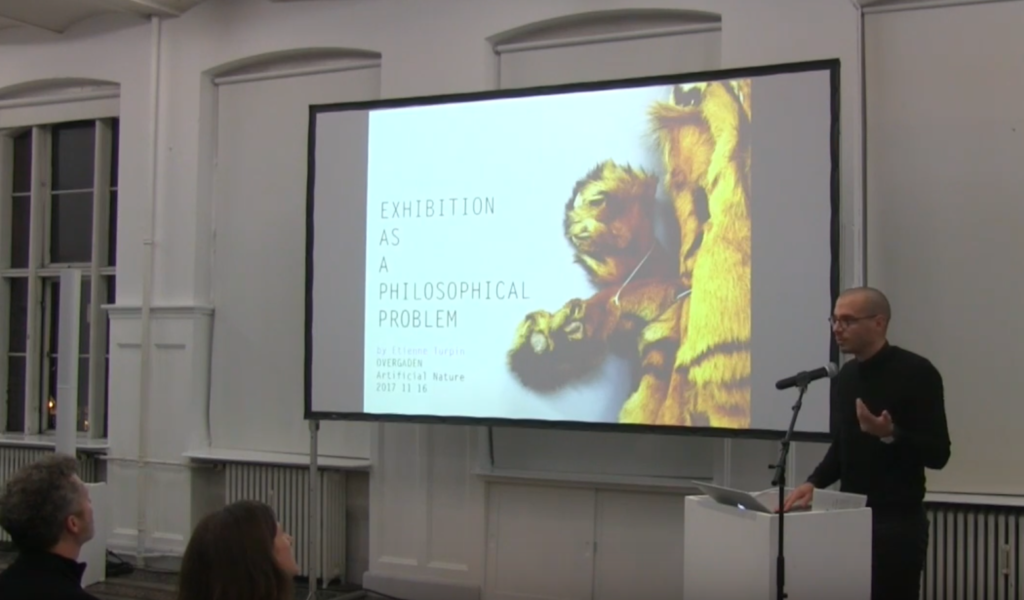
With presentations by artists, researchers and art professionals, this year’s Overgaden conference entitled “Artificial Nature: Potential and Conflict in the Age of the Anthropocene” investigates the relationship between art, culture, and nature from a cross-disciplinary perspective. Key questions include whether the concept of the Anthropocene contributes anything radically new, and if so, asks in what sense it possesses a critical and transformative potential? What understandings of nature are prevalent in artistic and curatorial practices, and is it possible—or even useful—to distinguish between nature and culture?
One week after the opening of the new exhibition “Verschwindende Vermächtnisse: Die Welt als Wald,” Etienne Turpin will present the project in a philosophical lecture focusing on curatorial views of nature, and also probing the significance of artists and cultural institutions in tackling the urgent environmental challenges facing society today.
Speakers include: Jacob Wamberg, Professor in Art History at Aarhus University, Denmark; Simon Starling, artist, UK; T.J. Demos, Professor in Visual Culture and History of Art, University of Santa Cruz; Cecilia Jönsson, artist, Sweden/Norway; Andreas Malm, Associate Senior Lecturer in Human Ecology at University of Lund; Mickey Gjerris, Associate Professor in Bioethics, Denmark; Jacob Lillemose, Curator and Founder of X & Beyond, Denmark; Nina Möllers, Curator and Researcher at Rachel Carsons Center and Deutsches Museum, Munich; Regine Rapp & Christian de Lutz, Curators and founders of Art Laboratory Berlin; and Adam Bencard, Researcher and Curator at Medical Museion, Denmark). The conference is moderated by biologist Hanne Strager, former Head of Exhibitions at the Natural History Museum of Denmark.
2019 11 08
VV exhibition review in Die Welt
— article by Julia Polke entitled "Grasping Nature as Culture"
“Der Wald als Kulturlandschaft: Eine einzigartige Ausstellung im Zoologischen Museum im Centrum für Naturkunde in Hamburg versammelt 13 künstlerische Positionen, die mit den Tierpräparaten und Objekten der Schausammlung korrespondieren….”
2019 11 09
Verschwindende Vermächtnisse 1 opens at Center for Natural History (CeNak) in Hamburg
— the first iteration of "Disappearing Legacies: The World as Forest" opens at University of Hamburg's Museum of Zoology
The exhibition “Verschwindende Vermächtnisse: Die Welt als Wald” is now open to the public at the Zoological Museum Hamburg!
Regular guided tours are offer by CeNak’s education team; the next curator-led tours with Anna-Sophie Springer & Etienne Turpin will take place on 22 November & 1 December.
2017 10 30
Verschwindende Vermächtnisse: Announcing Participating Artists
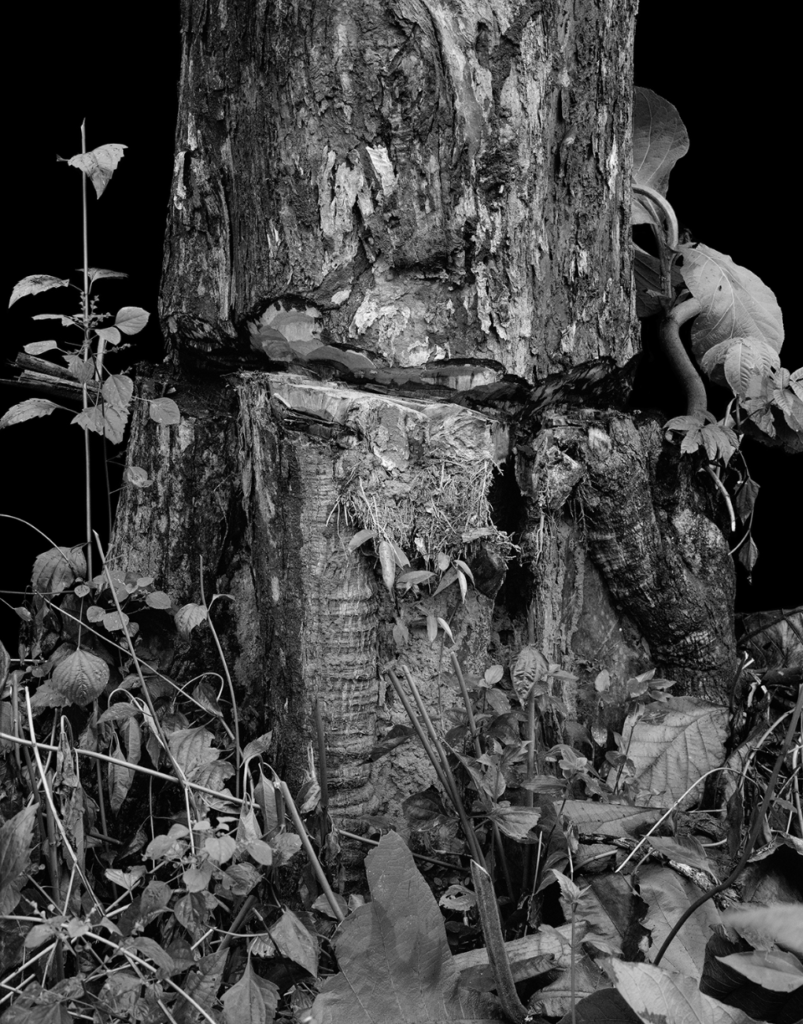
Shannon Lee Castleman, Tree Wounds, 2010/11. Series of photographs. Copyright © Shannon L. Castleman

Armin Linke, Palm oil plantation, Kecematan Bataian Kabupaten Rokan Hilir (Sumatra) Indonesia, 2017. Photograph. Copyright © Armin Linke

Armin Linke, Peatland fire, Kecematan Bataian Kabupaten Rokan Hilir (Sumatra) Indonesia, 2017. Photograph. Copyright © Armin Linke
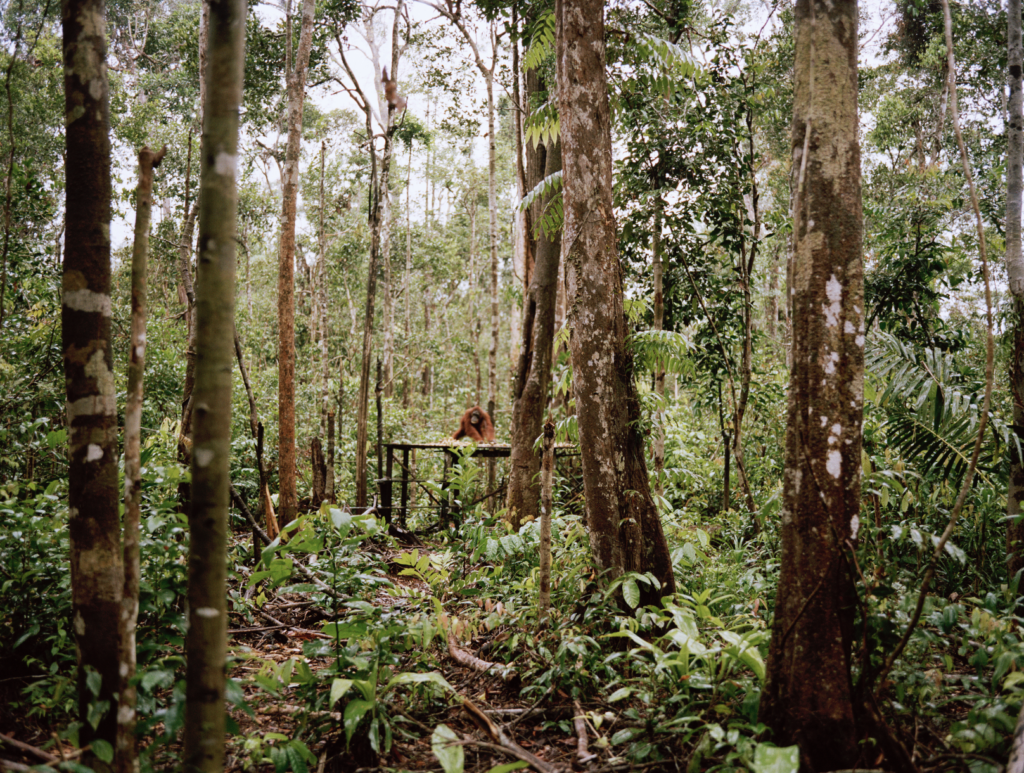
Armin Linke, Orangutan in the Tanjung Puting National Park, Kumai, Kalimantan Tengah (Borneo) Indonesia, 2017. Photograph. Copyright © Armin Linke

Robert Zhao Renhui, „Square Apple“ from the series, A Guide to the Flora and Fauna of the World, 2013. Courtesy Robert Zhao Renhui.

Barbara Marcel, Arara, 2017. Video still. Copyright © Barbara Marcel

Paulo Tavares, Trees, Vines, Palms and Other Architectural Monuments, 2017. Satellite and ground identification of the ancient village of Bö’u, the old geopolitical center of the Xavante territory of Marãiwatsédé, which is still outside their demarcated land. Credit: Bö’u Association/autonoma
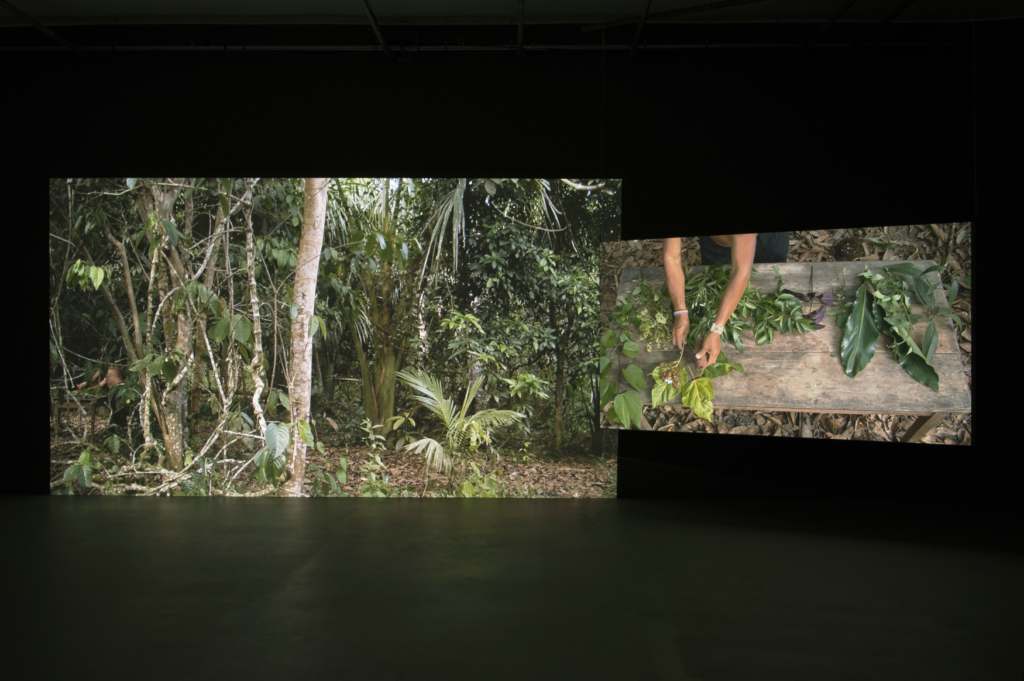
Ursula Biemann & Paulo Tavares, Forest Law, 2014. 2-channel synchonized video installation. Copyright © Ursula Biemann & Paulo Tavares
Maria Thereza Alves
Ursula Biemann
Bik Van der Pol
Shannon Lee Castleman
Revital Cohen & Tuur van Balen
Mark Dion
Radjawali Irendra / Akademi Drone Indonesia
Armin Linke with Giulia Bruno and Giuseppe Ielasi
Barbara Marcel
Julian Oliver & Crystelle Vu
Robert Zhao Renhui / The Institute of Critical Zoologists
SHIMURAbros
autonoma / Paulo Tavares
It’s been 160 years since Alfred Russel Wallace understood the principles of species evolution in the course of his travels through Amazonia and the Malay Archipelago. From 10 November 2017 to 29 March 2018, the exhibition Verschwindende Vermächtnisse: Die Welt als Wald confronts the destructions of these tropical ecosystems in the context of the Anthropocene and mass extinction. A hybrid between thematic exhibition and art exhibition, this intervention in the Zoological Museum Hamburg at Centrum für Naturkunde (CeNak), University of Hamburg, Verschwindende Vermächtnisse presents 13 contemporary works of art—including 8 new commissions—alongside a selection of rare zoological and botanical objects. We’re pleased to announce the names of the participating artists and thank them all for the inspiring dialogues and collaboration over the past year!
If you’re in or near Hamburg, please join many of us for the opening
9 November 2017, 18h00
Centrum für Naturkunde (CeNak)
Zoologisches Museum Hamburg
Bundesstrasse 52
20146 Hamburg
2017 11 06
[ In German ] The Gong Strikes: Death
A first media report on Verschwindende Vermächtnisse: Die Welt als Wald
“This beautifully titled exhibition, ‘Disappearing Legacies: The World as Forest,’ demonstrates that the paradigm change of seeing critically has arrived in the natural history museums. They too have realized that it’s their responsibility to sensitize [the public] for a changing biodiversity and climate change. And in this context, photo or video-based narrative productions of contemporary art work well to stir up the rather minimal display strategies of the natural sciences, expanding them through historical, political, and social dimensions.”
Karin Schulze in Szene Hamburg, November 2017
2017 10 17
Robert Zhao Renhui on a research visit at the Zoological Museum Hamburg
In preparation for his room-size installation in Verschwindende Vermächtnisse: Die Welt als Wald, the Singapore artist Robert Zhao Renhui had the opportunity to get a close look at CeNak’s entomology collection. On a previous visit we met with the curators of the Loki-Schmidt-Haus – Museum für Nutzpflanze (Useful Plant Museum) as well. His participation in the exhibition cycle is generously supported by the Goethe-Institut Singapore and Robert will be back in March 2018 during the closing week of the show.
2017 09 20
Interviews about Verschwindende Vermächtnisse: Die Welt as Wald
— CeNak, the exhibition cycle's host institution, launches new exhibition website
The Centrum für Naturkunde at the University of Hamburg has launched a website to contextualize the forthcoming exhibition Verschwindende Vermächtnisse: Die Welt als Wald, which will open at the Center’s Zoological Museum on 9 November. The site includes new interviews with guest curators Anna-Sophie Springer and Etienne Turpin about their role and ideas in bringing art into the natural history museum, as well as with Prof. Dr. Matthias Glaubrecht, the director of CeNak, about Wallace’s legacies for contemporary biology (in German only).
(Photo: UHH/CeNak, Reiss, 2017)
2017 09 18
On Coexistence
— essay by Anna-Sophie Springer in Faraway, So Close, the book accompanying the 25th Ljubljana Biennial of Design (BIO 25)
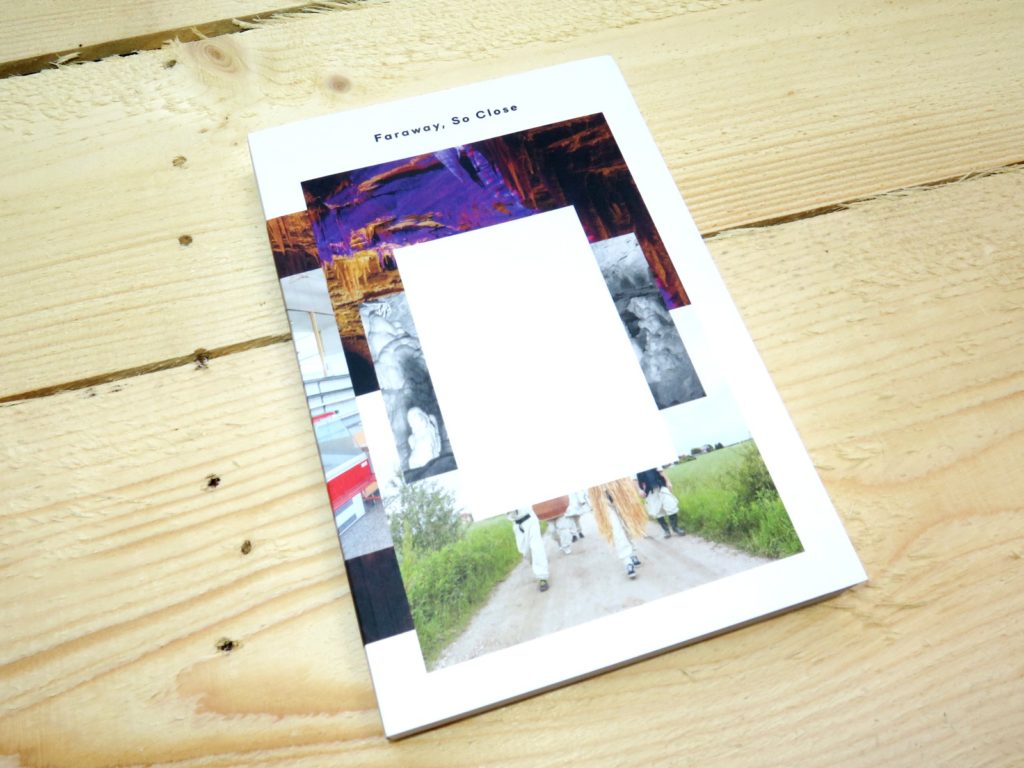
The book, published by MAO and Motto Books, works to explore ways of changing the goals of design culture. By presenting the seven investigative episodes developed within BIO 25 and their interchange with both local archives and broader paradigms, the project aims to turn away from the urgent need to solve problems, and instead open up new frontiers for observation and experimentation. It seeks to consider our inhabited and habitable world for what it is and what it is becoming, and not simply what we think it should, ideally, be.
Edited by Angela Rui, Maja Vardjan and Cvetka Požar, with contributions by Nabil Ahmed, Andrea Branzi, Tony Côme, Brendan Cormier, matali crasset, Domitilla Dardi, Odo Fioravanti, Didier Fiúza Faustino, Studio Formafantasma, Thomas Geisler, Rory Hyde, Alexandra Midal, mischer’traxler studio, Dimitrij Mlekuž, Point Supreme Architects, Emanuele Quinz, Renata Salecl, Anna-Sophie Springer, Studio Folder, James Westcott, Elia Zenghelis and many others, as well as an extensive photo documentary essay of the episodes by Delfino Sisto Legnani and Marco Cappelletti.
[ more ]
2017 09 15–17
Open Studio during Berlin Art Week
Visit us in our new studio on the FAHRBEREITSCHAFT compound in Berlin-Lichtenberg
Where: FAHRBEREITSCHAFT – Werkstatt 4 [in Brandlhuber’s “bar building”], Herzbergstr. 40–43, 10365 Berlin
When: Fri, 15 Sept, 19h00–21h00 // Sat & Sun, 16–17 Sept, 12h00–18h00
[more]
2017 09 11–12
CeNak Exhibition Research Continues
The Reassembling the Natural investigators met again with the scientific curators of the Zoologisches Museum at the Centrum für Naturkunde (CeNak), Universität Hamburg, to continue our research for the forthcoming exhibition Verschwindende Vermächtnisse: Die Welt als Wald. We also met with Matthias Schultz at the Hamburg Herbarium to examine collections from the prestigious German botanists Winkler (in Borneo) and Ule (in Amazonia). Thanks to everyone for another amazing visit in the collections.
2017 07 13
Landscape and Memory
A review of The Word for World is Still Forest by Jason Groves
Perfectly timed for the book launch-walk in Berlin’s Tiergarten tonight, Jason Groves has composed a beautiful reading of intercalations 4 published on the Feedback Blog of Open Humanities Press.
[more]
2017 07 13
intercalations 3 & 4 book launch - Berlin Tiergarten
take the books outside
a launch for intercalations 3 & 4 in the Tiergarten with the editors, Sandra Bartoli, Jason Groves, Richard Pell, and Katharina Tauer
Thursday 13 July 19h00
Floraplatz
Tiergarten
Berlin
Starting location is in front of the Amazone zu Pferde [ “Amazon on horseback” ] statue at Floraplatz:
http://bit.ly/2uhNYGO
Please join intercalations editors Anna-Sophie Springer and Etienne Turpin for a guided tour of the various natures of the Tiergarten with Berlin-based architect Sandra Bartoli.
During the tour, visitors will also encounter special guests Richard Pell, director of the Center for Postnatural History, and Jason Groves, co-editor of the open access blog Feedback.
Copies of intercalations 3 and 4 will be available for sale at the event.
2017 06 26–27
Contesting the Necroaesthetics of the Anthropocene
— invited lecture by Anna-Sophie Springer & Etienne Turpin at "Art/Nature: Contemporary Art in Natural History Museums and Collections," Berlin Museum für Naturkunde

This international conference by the Kulturstiftung des Bundes pilot project, “Art/Nature: Artistic Interventions at the Museum für Naturkunde Berlin” convenes a series of presentations and panel discussions to reflect on the collaboration between protagonists from the worlds of contemporary art and natural history museums. The conference addresses the expectations, potentials, values, and possible limitations of such interactions and interventions from the perspective of curators, artists, and researchers. “Reassembling the Natural” Co-Principal Investigators Anna-Sophie Springer & Etienne Turpin will present their work in the closing session “Difficult Legacies” on 27 June.
Other conference speakers include Tal Adler, Claude d’Anthenaise, Bergit Arends, Ariane Berthoin Antal, Yara Castanheira, Tony Clark, Michael John Gorman, Gaby Hartel, Petra Lange-Berndt, Janet Laurence, Susanne Schmitt, Thomas Schnalke, Barbara Stauffer, Frank Steinheimer, Ulrike Stottrop, D’Arcy Wilson, and Laurie Young.
2017 06 20
CeNak Exhibition Research
The Reassembling the Natural team met with the scientific curators of the Zoologisches Museum at the Centrum für Naturkunde (CeNak), Universität Hamburg, to continue their research for the forthcoming exhibition Verschwindende Vermächtnisse: Die Welt als Wald. Thanks to everyone at CeNak for an inspiring visit.
2017 06 16
New Book Release: Reverse Hallucinations in the Archipelago
— intercalations 3, edited by Anna-Sophie Springer & Etienne Turpin
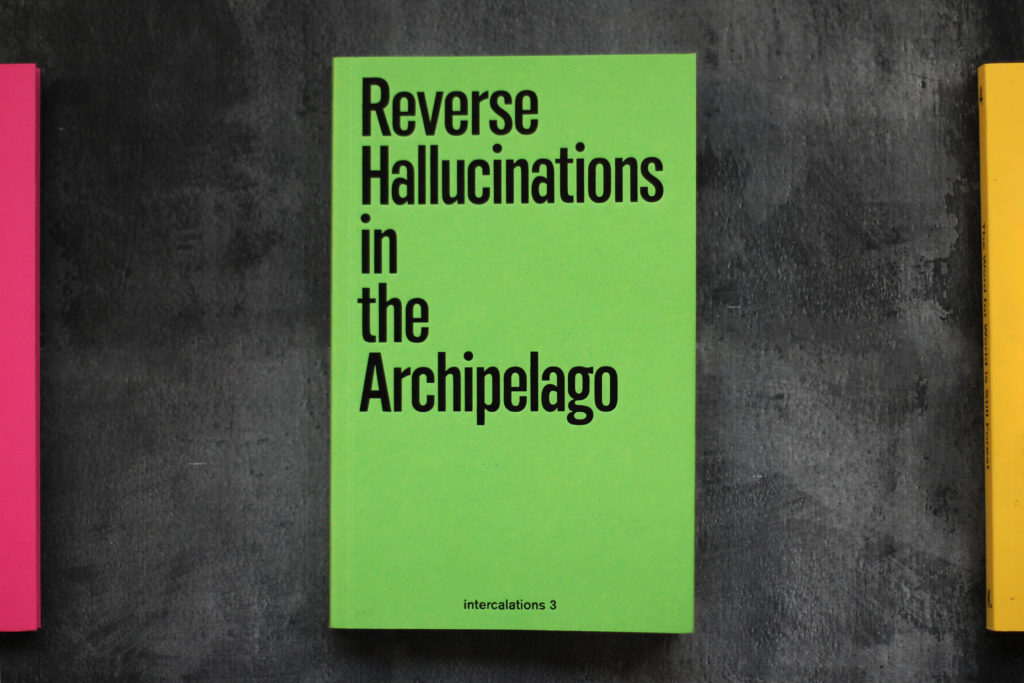
… unfolds an itinerant encounter with nineteenth-century European naturalists in the Malay world, where the theory of evolution by natural selection emerged alongside less celebrated concerns about mass extinction and climate change; by re-considering the reverse hallucinatory condition of colonial science in the tropics—how scientists learned to not see what was manifestly present—the reader-as-exhibition-viewer may exhume from the remains of this will to knowledge an ethical conviction of particular relevance for confronting forms of neocolonization in the Anthropocene. Edited by Anna-Sophie Springer & Etienne Turpin. With contributions by Akademi Drone Indonesia, George Beccaloni, Lucy Davis, Fred Langford Edwards, Christina Leigh Geros, Matthias Glaubrecht, Geraldine Juárez, Radjawali Irendra, James Russell, Mark von Schlegell, Iwank Celenk & SLAVE PIANOS, Anna-Sophie Springer, Zenzi Suhadi, Paulo Tavares, Rachel Thompson, Etienne Turpin, and Satrio Wicaksono. Design in collaboration with Katharina Tauer. Published by K. Verlag & Haus der Kulturen der Welt, 2017.
2017 05 25
Graham Foundation Awards Grant for Publication
With a current rate of extinction estimated at over one hundred species per day, the anthropogenic extermination of non-human forms-of-life on Earth is rightly a cause of serious alarm. Such a rate of extinction is made even more troubling when one considers that with the disappearance of each species, the planet not only loses one of its constituent actors, but also greatly diminishes the processes of planetary evolution, as the potential for species’ adaptability rapidly decreases with each and every loss. Following several years of commissioned field work in the global biodiversity hotspots of Nusantara and Amazonia, as well as extensive archival research in major natural history collections, this edited volume weaves together voices and narratives, from science and documentary, to philosophy and poetry, to ask how the concept of “nature” might be meaningfully reassembled against the backdrop of mass extinction.
[more]
2017 05 08
Speed-Reading Science-Fictions
Invited lecture by Anna-Sophie Springer at the Symposium "On Nature, Race, and Gender," Institut Kunst Basel
Emphasizing the need for a new culture of learning in both the artistic and scientific practices, Reassembling the Natural Co-PI Anna-Sophie Springer will present a speed-reading through the 3rd and 4th volumes of the intercalations: paginated exhibitions series. The invitation came in only one day before to cover for a sick colleague. Other speakers in the symposium “On Nature, Race, and Gender: The Politics of the Contemporary Debates around Art, Culture, and Research,” are Filipa Ramos, Tejal Shah, Trevor Paglen, Ingo Niermann, and Natascha Sadr Haghighian. The event is curated by Prof. Chus Martinez
2017 04 19
Requiem for the Cryosphere
A Roundtable Talk on Nature, Politics, and Denial by Etienne Turpin
with Jody Berland, Nigel Clark, and Reassembling the Natural Co-Principal Investigator, Etienne Turpin. Moderated by Sean Cubitt as part of the three-part workshop series “Mediating Deep Space & Time” organised by the Screen and Audiovisual Research Unit (SARU), based at the Department of Media & Communications, at Goldsmiths, University of London.
2017 03 28–31
The World as Forest
— theory week with Anna-Sophie Springer at Institut Kunst Basel
Using the new intercalations publication, The Word for World is Still Forest, as a starting point, Anna-Sophie Springer’s second seminar at Institut Kunst in Basel will combine readings and discussions with excursions behind the scenes of the city’s Tropenhaus of the Botanical Gardens, the Museum der Kulturen, and the Natural History Museum. Traversing the archives of institutions that collect natural and cultural material—books, artworks, artifacts, and scientific specimens—we will reflect on how these institutions define “knowledge” discourses. The seminar is an introduction to applied critical thinking with a focus on more-than-human entanglements and ecological urgencies of our times.
2017 02 27
New Book Release: The Word for World is Still Forest
— intercalations 4, edited by Anna-Sophie Springer & Etienne Turpin

“The Word for World is Still Forest” is an homage to the forest as a turbulent, interconnected, multinature. It moves from concepts of the forest as a thinking organism to the linear monocultural plantations that now threaten the life of global forests. The volume opens with a series of facsimile pages from Ursula K. Le Guin’s eponymous novella The Word for World is Forest from 1972, for which the editors scanned their personal, marked-up copy for excerpts that now read like poetic, urgent pledges. Edited by Anna-Sophie Springer & Etienne Turpin. With contributions by Sandra Bartoli, Kevin Beiler, Shannon Castleman, Dan Handel, Katie Holten, Silvan Linden, Yanni A. Loukissas, Eduardo Kohn, Pedro Neves Marques, Abel Rodríguez, Carlos Rodríguez, Suzanne Simard, Anna-Sophie Springer, Paulo Tavares, Etienne Turpin, and Catalina Vargas Tovar. Design in collaboration with Katharina Tauer. Published by K. Verlag & Haus der Kulturen der Welt, 2017.
2017 02 11-12
A Natural History of the Stack
A two day workshop by Reassembling the Natural Co-Principal Investigator Etienne Turpin as part of Benjamin Bratton’s ‘The New Normal’ program for the Strelka Institute of Media, Architecture, and Design.
2017 01 25
Our Vectors, Ourselves
An essay by Reassembling the Natural Co-Principal Investigator Etienne Turpin and researcher Kalli Stull in the e_flux journal series, Superhumanity, published alongside the 3rd Istanbul Design Biennial—Are We Human?
2017 01 21
To Look Around Rather Than Ahead
On the Present Future in the Art of Tamás Kaszás and Anikó Loránt
An essay by Reassembling the Natural Co-Principal Investigator Anna-Sophie Springer in the exhibition catalog for Hungarian artist Tamás Kaszás and the ex-artists’ collective, Exercises in Autonomy, ed. Joanna Sokolowska. Lodz: Museum Sztuki w Lodzi, 2017. 164–78 (Polish & English).
2017 01 18
Fantasies of the Library
Times Literary Supplement Review
A lovely little review of Fantasties of the Library (MIT Press, 2016), edited by Reassembling the Natural Co-Principal Investigators Anna-Sophie Springer and Etienne Turpin, by Gill Partington in the TLS (18 January 2017): 33.
2016 12 15
CeNak Announces Funding for Verschwindende Vermächtnisse
The German Federal Cultural Foundation (KSB) funds the exhibition cycle Disappearing Legacies: The World as Forest, with a sum of €237.000. The KSB supports for the first time a major multi-disciplinary exhibition which will be realized at the Centrum für Naturkunde, in cooperation with the Schering Stiftung.
The exhibition is curated by Reassembling the Natural Principal Co-Investigators Anna-Sophie Springer and Dr. Etienne Turpin, bringing together works by contemporary artists with natural history specimens and field research in connection with tropical collections. The exhibition aims to make sense of the becoming and disappearing of species and the impact of the human on natural systems. The 19th-century perspective of the naturalist-collector Alfred Russel Wallace will be juxtaposed with contemporary works assessing environmental change and land use transformation.
2016 11 28
The Parameterization of Life on Earth
Lecture by Etienne Turpin, Curtin University, Australia
From 28–30 November, the geo- Symposium brings together a select number of established and emerging scholars who are, in different ways, leading reflection on the significance or the problem of the Earth for understanding posthumanity, culture and technology. In its explorations of the cultural and conceptual dimensions to our planetary condition, geo- will test the capacity for humanities-based inquiry to stake a place within not only ecology and environmentalism, but perhaps also within the earth sciences more generally. Together with Nigel Clark, Sean Cubitt, Thom van Dooren, Matthew Kearnes, Peta Mitchell, Stephen Muecke, Chris Russill, and Isabelle Stengers, Reassembling the Natural Principal Co-Investigator Etienne Turpin is one of these invited speakers.
29 Oct 2016 – 29 Jan 2017
Is the City a Laboratory?
— video installation by Etienne Turpin at the CCA Centre for Contemporary Art Signapore
With more than half the world’s population living in urban settlements, cities have become a defining force of the Anthropocene. The two-channel video installation Is the City a Laboratory? produced by Reassembling the Natural Principal Co-Investigator Dr. Etienne Turpin as part of an ongoing research project on urban experimentation, uses itinerant ethnography as a means to generate collaborative design briefs for platform infrastructures. How has experimentation produced cities? How, in turn, have urban labs, architects, designers, and artists created experimental and collective practices that repurpose urbanization toward other futures? The videos include footage from interviews, field work, and research related to the development of the Urban Lab Network Asia (labnet.asia), a platform for coordination, investigation, and collaboration.
2016 11 17–18
Curating Environmental Imaginaries
— a Roundtable at the Joint Research Centre of the European Commission, Ispra, Italy
With the aim to consider how creative interventions can unlock new ways of thinking about our relationship to the environment and our political agency within it, the workshop A Year Without A Winter: Fictions and Policy (organized by Dehlia Hannah, Cynthia Selin, and Angela Pereira) interrogates narratives of climate and climate change emerging in the context of the arts and transdisciplinary scholarship. As an invited panelist to the Roundtable ”Curating Environmental Imaginaries“ on 17 November, Co-Principal Investigator Anna-Sophie Springer will introduce Reassembling the Natural, exemplifying some of the project’s core concerns and strategies. Also presenting at this Roundtable are Ken Eklund, Jacob Lillemose, and Carolina Sobecka.
2016 11 08–11
Shapeshifting Fact & Fiction
— theory week with Anna-Sophie Springer at Institut Kunst Basel
Led by Reassembling the Natural Co-Principal Investigator Anna-Sophie Springer, this workshop will unfold through a series of traversals through the archives of institutions that collect cultural material—books, artworks, artifacts, and scientific specimens. We will understand how these institutions organize what is considered knowledge and explore strategies and practices with which we can activate and connect these spaces in ways in which they are not normally viewed by dominant, colonial cultures. In this process, we will critically interrogate books, exhibitions, archives, and collections, attending to how they record and disseminate knowledge, experimenting along the way with cross-overs, shape-shifting, fact and fiction.
2016 10 03
Computation Rules Everything Around Me
MIT Lecture by Etienne Turpin
Intangible infrastructures.
Nonorganic vitalities.
Software aesthetics.
Digital solidarities.
Human machines.
Technical debts.
Bot torrents.
Post-Media.
Through a survey of recent design projects from anexact office, ReassemblingNature.org, and labnet.asia, Reassembling the Natural Principal Co-Investigator Etienne Turpin will argue in the lecture for an interventive disposition toward the parametrization of life on earth.
2016 09 28
Can the Anthropocene be Exhibited?
Lecture by Etienne Turpin at the Exploratorium in San Francisco
How can museums and other cultural institutions better address the increasing volatility and vulnerability of the Earth system? How can museums facilitate observation of the human impact on planetary systems and make observation a truly public enterprise? Join moderator Jason Groves, architect Sara Dean, and Reassembling the Natural Principal Co-Investigator Etienne Turpin at the Exploratorium for a wide-ranging discussion of contemporary aesthetic, curatorial, and archival strategies for learning to see this rupture in the Earth’s history
2016 09 15–24
LabVerde Residency & Sao Paolo Biennale
— Anna-Sophie Springer receives Goethe Institute research grant for trip to Brazil

In September, Anna-Sophie Springer will undertake a trip to the western hemisphere in order to visit the areas around Manaus in Amazonia as well as go to Sao Paulo and Rio de Janeiro. Manaus is located at the confluence of two rivers, the Solimões and Rio Negro. Together, both rivers form the Amazon, which continues to flow east and into the Atlantic. It was here that Alfred Russel Wallace spent much time during his neotropic collecting expedition between 1848 and 1852, which is described in his book “Travels on the Amazon and Rio Negro.” As a means to do field-research for the forthcoming exhibition “Disappearing Legacies: The World as Forest,” Anna-Sophie will participate in the international artist residency LabVerde; with this group, she will travel on the river by boat for some days and later on stay in the rainforest for another ten days while being hosted at the ecological science station Adolpho Ducke. After this, she will continue with collections research in Rio de Janeiro and Sao Paolo where she will be hosted by colleague Paulo Tavares. The trip is generously funded by a Goethe-Institut Research Travel Grant for Curators.
2016 09 14
Fantasies of the Library — Released on MIT Press
Fantasies of the Library, edited by Reassembling the Natural Principal Co-Investigators
Anna-Sophie Springer and Etienne Turpin, has been released on MIT Press.
2016 08 08
Anxious Instantiations
— essay by Anna-Sophie Springer & Etienne Turpin for Transmediale
An essay in response to Isabell Lorey & David Lyon’s Anxious to Secure
keynote conversation at Transmediale
2016 07 19
Necroaesthetics: Denaturalising the Collection
— essay by Anna-Sophie Springer & Etienne Turpin
L’internationals Online, No. 3 “Ecologising Museums,” July 2016.
2016 07 04
Vestiges of 125,660 Specimens of Natural History
— Photo Essay by Anna-Sophie Springer & Etienne Turpin
This article offers numerous annotated photographs to narrate and reflect on the curatorial research and production process of the exhibition 125,660 Specimens of Natural History at Komunitas Salihara Jakarta in 2015. Published on invitation in Stedelijk Studies, No. 04 “Between the Immersive and the Discursive: Curating Research in Twenty-First-Century Art Museums” (2016).
(Photo by Etienne Turpin, 2015)
2016 04 22
Necroaesthetics: Life & Death of Natural History
a workshop at ECAL Lausanne
by Anna-Sophie Springer & Etienne Turpin
as part of the curatorial lab Theater, Garden, Bestiary: A Materialist History of Exhibitions organized by Vincent Normand & Tristan Garcia
2016 04
Inter Folia Aves: Bird Books as Curatorial-Editorial Constellations
— essay by Anna-Sophie Springer
in Publishing as Artistic Practice, edited by A. Gilbert. Berlin: Sternberg Press, 2016. 134–52.
2016 03
Filtering the Anthropocene: A Visual Montage as Proxy
— essay by Anna-Sophie Springer
for the Anthropocene Curriculum, Haus der Kulturen der Welt, Berlin.
2016 02 – 04
The Zoology Lesson: A Physis is Being Organized...
an Online Library of Folders
curated by Anna-Sophie Springer & Etienne Turpin in collaboration with the Center for Postnatural History as Folder #02 of “Unfold: The Volume Project” by Sara Giannini.
2016 01 21
Few Straight Lines in a Forest: A Ligneous Constellation
— Goldsmiths Lecture by Anna-Sophie Springer
in the Visual Culture Department’s Tenth-Anniversary lecture series, “Permissions: The Way We Work Now” as respondent to Dr Paulo Tavares
September 2015
125,660 Specimens in the Press
The exhibition “125,660 Specimens of Natural History” was featured numerously in the local and international press, including HarianNasional, Jakarta Post, Kompas, KoranTempo, MetroTV, MongaBay, National Geographic, Tempo, Sarasvati Art Magazine, as well as Hyperallergic:
2015 08 15
Free Catalog: 125.660 Spesimen Sejarah Alam
— exhibition catalog in Bahasa Indonesian edited by Springer & Turpin

Visitors of 125.660 Spesimen Sejarah Alam at Komunitas Salihara can pick up a free exhibition catalog in Bahasa Indonesian inside the gallery. The publication was edited by Reassembling the Natural Principal Co-Investigators and Co-curators Anna-Sophie Springer and Etienne Turpin and includes texts on each participating artist and their works in the exhibition. It also offers diverse background material, including a selection of black-and-white digital exposures of rare early twentieth-century glass-plate negatives from the Collections of the Indonesian Institute of Science in Bogor, a series of color photographs by participating artist Fred Langford Edwards as well as documentary color images from the curatorial research process. The publications is wrapped in a fold-out poster and also includes an essay and a timeline on A.R. Wallace’s Malay expedition by evolutionary biologist Andrew Berry (Harvard University), and translated by Ninus D. Andarnuswari, as well as an interview by the curators with Satrio Wicaksono about the current scientific core sample drilling project in Lake Towuti (Sulawesi) with the aim to better understand 800,000 years of Southeast Asian climate history.
125.660 Spesimen Sejarah Alam. 60 pages, 134 images in black-and-white & color. Edited by Anna-Sophie Springer & Etienne Turpin. With texts by Andrew Berry, Nirwan Dewanto, Anna-Sophie Springer, Etienne Turpin, Rosichon Ubaidillah, and Satrio Wicaksono. English-Indonesian translations by Ninus D. Andarnuswari, Selly Nur Fadhillah, and Alifa Rachmadia Putri. Design by Alexandra Berceanu. Produced by Anna-Sophie Springer (K. Verlag, Berlin).
(Photo by Tatiana Kusomo)
15 August – 15 September 2015
125,660 Specimens of Natural History opens at Komunitas Salihara Jakarta

125,660 Specimens of Natural History is the first major exhibition of Reassembling the Natural; the project addresses colonial natural history collections and the environmental transformations they produced, and the legacy of these activities, known as the Anthropocene. The exhibition follows the course of Alfred Russel Wallace (1823–1913), best known for co-discovering the theory of evolution by natural selection. From 1854 to 1862, Wallace travelled the Malay Archipelago, documenting the region’s biodiversity and amassing a gigantic collection of specimens for European museums. The project invites artists to retrace, re-appropriate or reassess the expedition, its documents, and its various artifacts, and explores how trans-cultural collaborative approaches to artistic and scientific practice can address urgent environmental questions.
Premiering at the gallery of the multi-arts center Komunitas Salihara, the project presents works by 13 Indonesian participants and 13 foreign participants—including ten newly created artworks—alongside books, archival material, and zoological specimens from the Research Center for Biology/Indonesian Institute of Sciences (MZB/LIPI) at Bogor-Cibinong, and related historical objects.
Participating Artists:
Ari Bayuaji
farid rakun (Equanorth)
Theo Frids Hutabarat
Aprina Murwanti & Bharoto Yekti
Intan Prisanti
Lintang Radittya
Ary Sendy
Andreas Siagian
Zenzi Suhadi (WALHI)
Satrio Wicaksono (Towuti Drilling Project)
Tintin Wulia
Mahardika Yudha
Fred Langford Edwards
Lucy Davis
Mark Dion
Sigrid Espelien (Equanorth)
Geraldine Juarez
Cindy Lin
Edwin Scholes & Tim Laman
Flora Lichtman & Sharon Shattuck
Shannon Lee Castleman
Laleh Torabi
Robert Zhao Renhui (Institute of Critical Zoologists)
The exhibition 125.660 Spesimen Sejarah Alam is realized in partnership with the multi-arts center Komunitas Salihara and with zoological specimens loaned from the Museum Zoologicum Bogoriense/Indonesian Institute of Science (LIPI/MZB). It was made possible by Schering Stiftung and with additional support of the Goethe-Institut and the British Council.
2015 06 25
Art in the Anthropocene Released
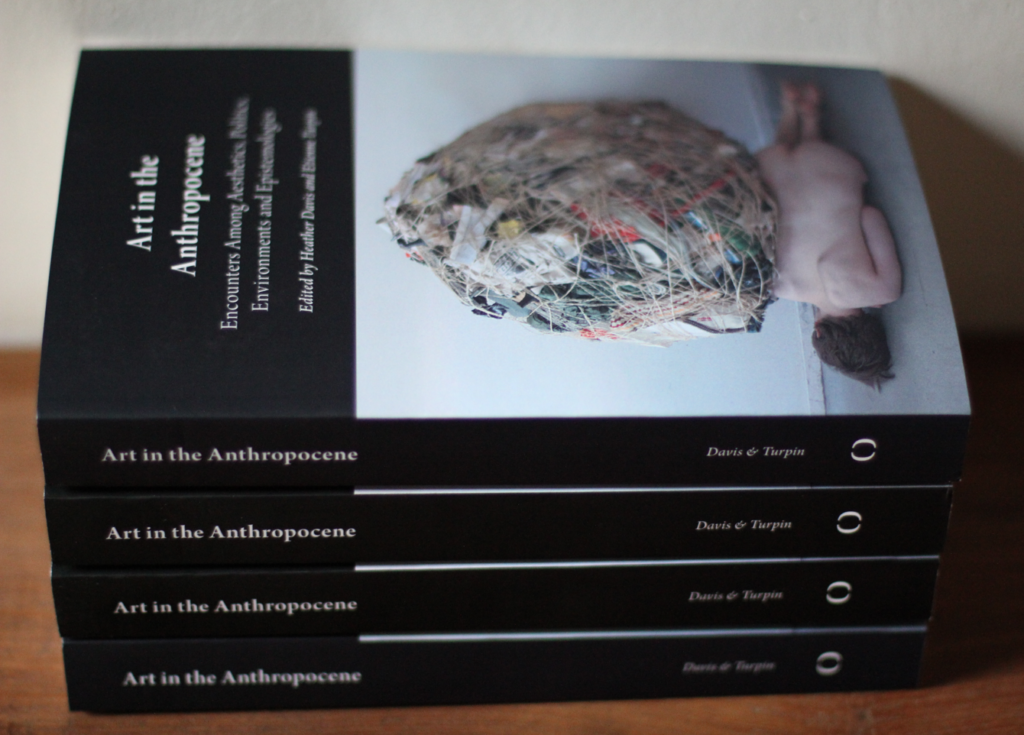
Art in the Anthropocene:
Encounters Among Aesthetics, Politics, Environments and Epistemologies
edited by Heather Davis & Etienne Turpin
Open Humanities Press
June 2015
Taking as its premise that the proposed geologic epoch of the Anthropocene is necessarily an aesthetic event, this book explores the relationship between contemporary art and knowledge production in an era of ecological crisis, with contributions from artists, curators, theorists and activists. Contributors include Amy Balkin, Ursula Biemann, Amanda Boetzkes, Lindsay Bremner, Joshua Clover & Juliana Spahr, Heather Davis, Sara Dean, Elizabeth Ellsworth & Jamie Kruse (smudge studio), Irmgard Emmelhainz, Anselm Franke, Peter Galison, Fabien Giraud, & Ida Soulard, Laurent Gutierrez & Valérie Portefaix (MAP Office), Terike Haapoja & Laura Gustafsson, Laura Hall, Ilana Halperin, Donna Haraway & Martha Kenney, Ho Tzu Nyen, Bruno Latour, Jeffrey Malecki, Mary Mattingly, Mixrice (Cho Jieun & Yang Chulmo), Natasha Myers, Jean-Luc Nancy & John Paul Ricco, Vincent Normand, Richard Pell & Emily Kutil, Tomas Saraceno, Sasha Engelmann & Bronislaw Szerszynski, Ada Smailbegovic, Karolina Sobecka, Richard Streitmatter-Tran & Vi Le, Anna-Sophie Springer, Sylvère Lotringer, Peter Sloterdijk, Zoe Todd, Etienne Turpin, Pinar Yoldas, and Una Chaudhuri, Fritz Ertl, Oliver Kellhammer & Marina Zurkow.
April 2015
Art as A Multispecies Engagement
— Eben Kirskey in conversation with Anna-Sophie Springer
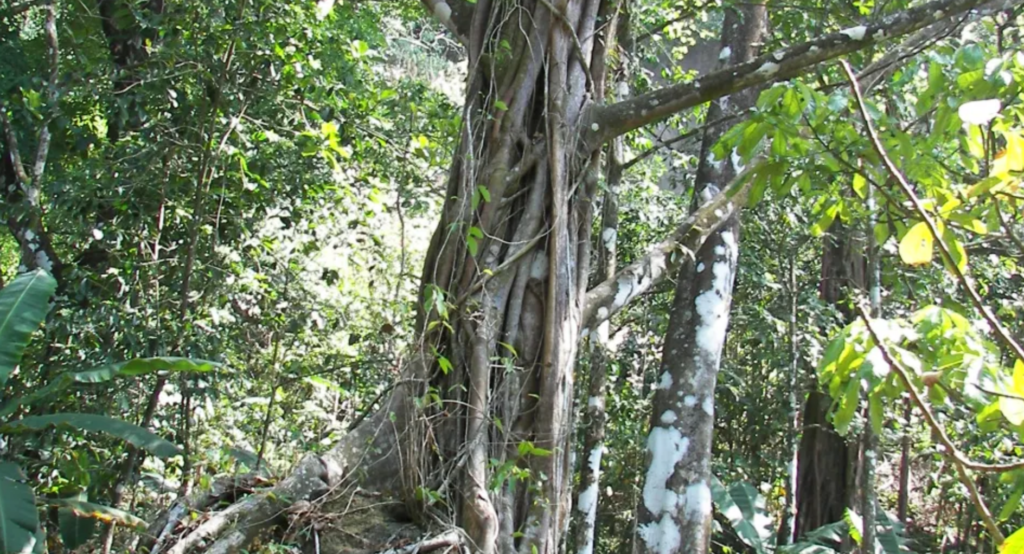
The following conversation is an edited transcript of a Skype interview from early March 2015. The text was originally published on the blog of the SYNAPSE – International Curators’ Network of the Berlin Haus der Kulturen der Welt on 12 April 2015.
Anna-Sophie Springer: In 2012 you published your intense book Freedom in Entangled Worlds on the independence struggle of the indigenous people in West Papua. Subsequently, you edited the book The Multispecies Salon, mostly located in North America, dealing with bio-art projects, which came out only two years later. Although I can easily see how both of these publications are related in many ways, I still think it is safe to say that they are nevertheless quite different projects, too. Could you narrate how you moved from your bold ethnographic research in Southeast Asia to curating and experimenting with such a specific artistic genre as bio-art?
Eben Kirksey: Both projects explore the idea of “hope.” In West Papua I was trying to understand a situation where people really don’t have any sort of rational reason to hold on to hope. They are stuck in a seemingly impossible situation—a military occupation. There is a genocide going on and very few people outside of West Papua are aware that the situation even exists. But I still found people holding on to hope. I tried to understand their hopes, which sometimes pushed the bounds of realism and realistic possibility, and I came to understand the power of the messianic. Other scholars have written critical accounts of messianic movements—about the messianism of US imperialism and militarism, as well as messianic imaginings of marginalized groups that seem “unrealistic.” I came to look at the way that seemingly impossible dreams can become contagious and inspire a multitude, a swarm if you will, into action. In “Freedom in Entangled Worlds” I described hope as something that moves like liquid mercury. Hopes often coalesce around a specific figure or future event on imaginative horizons, and then dance away along other lines of flight to animate other objects….read the full conversation on:
2014 11 11
The World in Which We Occur
Lecture for Contemporary Art Centre Vilnius
Prototype event with Etienne Turpin, Rory Rowan, and Nabil Ahmed
Contemporary Art Centre Vilnius
Vilnius, Lithuania
12h00
A prototype of the event was organized by the CAC as part of a likeminded series titled Pharmacokinetics of an Element in November 2014, in the context of one of the pilot exhibitions of the XII Baltic Triennial, Prototypes. The event focused on the global climate change debate classifying our era and its wide ranging consequences.
2014 10 18
Stratigraphy & Urbanism

a dialogue between Simon Price (British Geological Survey)
& Etienne Turpin (ReassemblingNature.org)
A Matter Theatre
Haus der Kulturen der Welt
Berlin Germany
19h00
What is the geological character of a city? Excavating and analyzing the subsurface zone of the urban landscape, the applied geoscientist Simon Price establishes an underground morphology of anthropic centers. His dialogue partner, philosopher and urban researcher Dr Etienne Turpin, advocates “a geologic turn in architecture,” promoting a more speculative, multidisciplinary, and activist research practice at the intersection of the urban, the environmental, and the political. Comparing their empirical fieldwork, this dialogue traces the methods and practices that inform approaches to the city as both an archival assembly of the Anthropocene as well as the ground for politicized architectural theory.
As the pair discuss the porophilia of geoscientists, subterranean infrastructures, the poropolitics of the undercommons, and the ethics of underground research, their comments about Buddhist geologists from Mars are made in reference to Bronislaw Szerszynski’s brilliant performance and accompanying text: “Liberation Through Hearing in the Planetary Transition: Funerary Practices in Twenty-Second-Century Mangalayana Buddhism,” published in Grain Vapor Ray.
2014 10 17
Botanical Hack Berlin
a workshop with Stefania Druga (HacKIDemia)
& Etienne Turpin (ReassemblingNature.org)
A Matter Theatre
Haus der Kulturen der Welt
Berlin Germany
Urban land reclamation for food production requires the development of accessible research tools to help assess and map soil properties. The network HacKIDemia develops DIY soil sensors to enable communities to plan and plant civic gardens and at the same time analyze and monitor potential sites for growing consumable plants. This demonstration consists of a collaborative assembly process co-developed by Stefania Druga (HacKIDemia) and Reassembling the Natural Principal Co-Investigator Dr. Etienne Turpin. This applied research, with a student research team, results in public proposition in the form of a group report: a detailed park-to-garden proposal to the HKW audience.
